TK-Emergency Life Pod Evacuation Station
(ELPES)
Emergency Life Pod Evacuation Station (ELPES)
Sky Scrapper/High Altitude Buildings Evacuation Technologies
Technokontrol and its R&D team are in continuously evolving safety, security programs, technologies and systems to which we try to create our vision of worst case scenarios and to find viable, efficient , pragmatic systems and technologies.
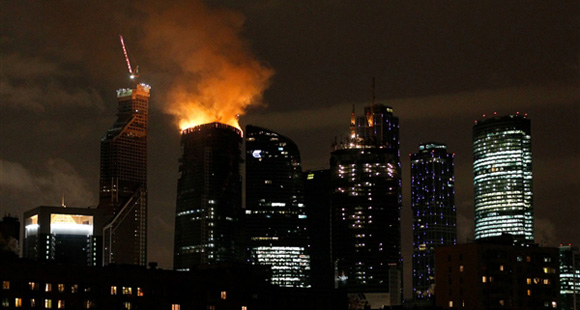
Especially after many years of suffering many high altitude building emergency scenarios and even extreme experiences in buildings emergencies as fires, accidents, terrorist attacks globally and to which as long as man is involved may occur at any time and place regardless of the present safety and security systems in place.
We at Technokontrol have designed, patented our unique safety technology and security systems to protect and to act in a preventative manner and to “attack head on” worst case scenarios at medium, high altitude buildings especially as the global “race” is on with regards of the highest, tallest and most number of these type of buildings in nations capitals or globally important cities, thus becoming more and more frequent the number of projects with regards of towers, medium , high altitude buildings and even mega sky scrapers as cities continuously growing, global population emigrating to cities and the ever number of people with financial wealth whom time is of the essence and can´t be bought commuting daily, thus in many cases the only way to grow is “upwards” and travel times to city outskirts can run into the hours or needing personal helicopter transport due to security risks as in Brazil, South America, or travelling through high risk city areas.
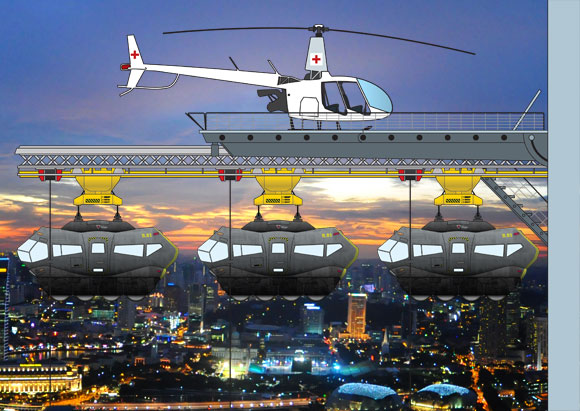
What is a medium-high altitude/skyscraper building, fire, explosion, risk, terrorist attack?
A skyscraper fire or high-rise fire is a class of structural fire specific to tall buildings. Skyscraper fires are one of the most technical fire suppression challenges posed to modern fire departments, and require a high degree of organization and cooperation among participating units to be successfully contained and extinguished. Skyscraper fires are often multiple-alarm fires.
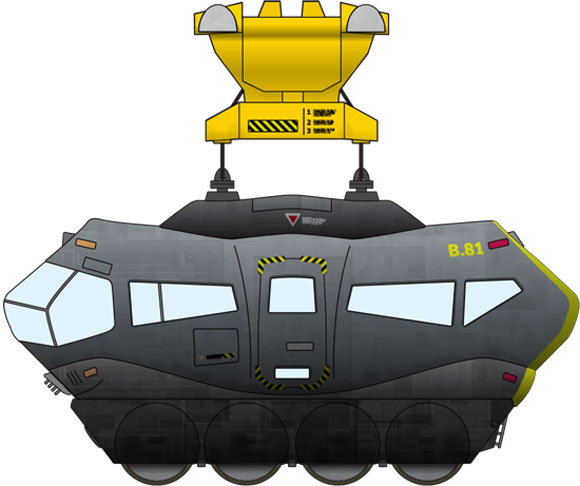
What has Technokontrol R&D designed, patented, manufactured to resolve these Security, HSE & Safety issues?
Our technology which we have named as “EMERGENCY LIFE POD EVACUATION STATIONS” are located inside these buildings as in a hanger capacity in which with an automated or manually operated emergency system these “Stations” are activated as “pre-holding areas” for all personnel, then as “waiting areas”, until the designated “Emergency Pods” are ready for their deployment and emergency evacuation of all the possible people on a continuous way as these “Pods” are used as in a lift system, unloading personnel, persons, assets, once reaching the ground of Emergency/Designated landing zone (ELZ)/(DLZ) is then unloaded and loaded with security, safety, medical personnel and in having access into the evacuation, accident, damages, attacked building areas without depending on the entrance of these specialist personnel via the “Building core” as in all normally designed medium-high altitude buildings.
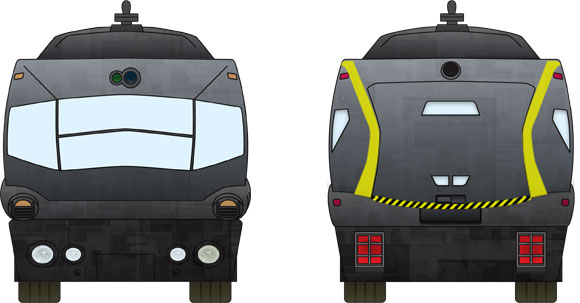
How do the “Emergency Life Pod Evacuation Stations work”?
1.Once a section, area, zone has been declared in the building as under threat due to any emergency reason as fires, terrorist attack, criminal attacks, natural disasters these designated building floors are opened for immediate evacuation via this route if internally or due to the fire-safety plan this is required to be operated.
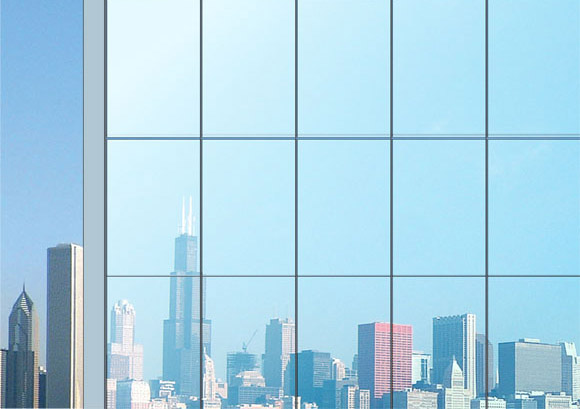
Building's façade - ELPES is not noticed
2. At the same time and once personnel are being located their designated “POD SEAT” the exterior of the building on that floor is opened via a hanger door system which will allow it exterior to create a basic helicopter roofing to also increase aerial evacuation or delivery of personnel or even law enforcement personnel en case of a terrorist attack, threat, and/or scenario.
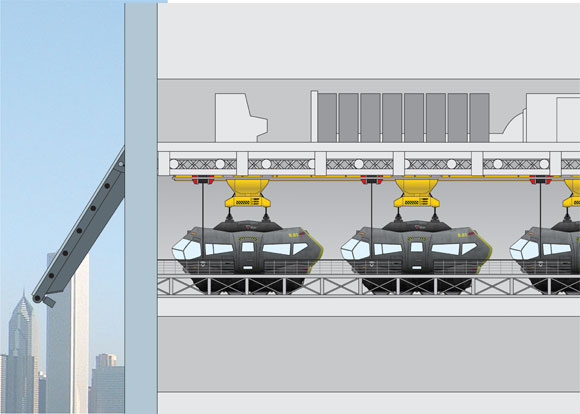
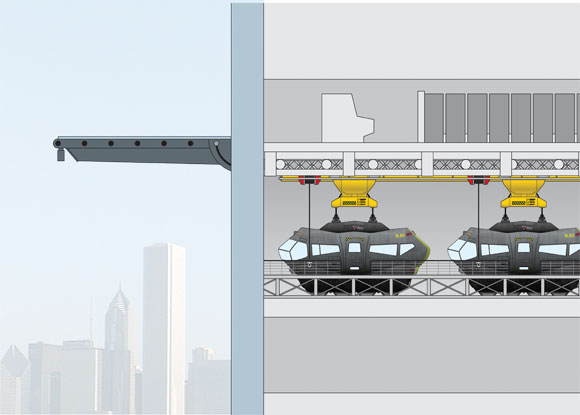
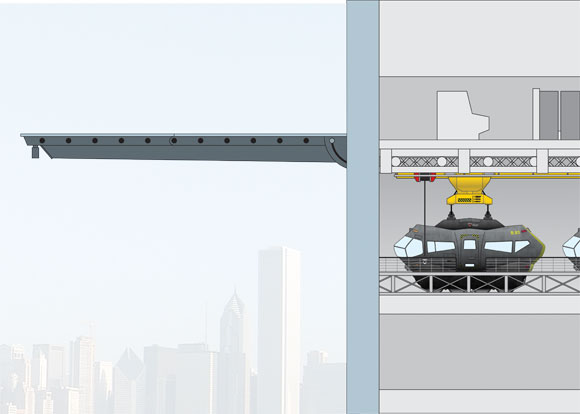
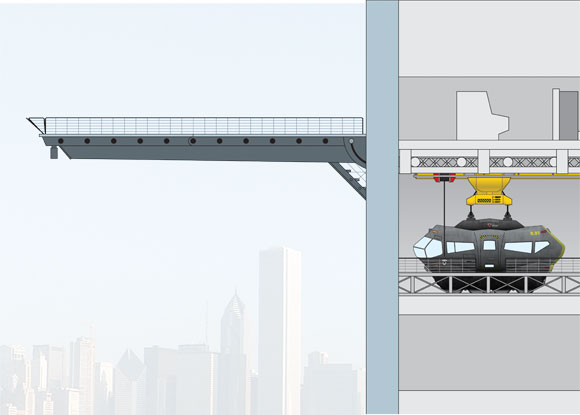
Gate opening and configuring itself as an emergency heliport
3. Once the “E.L.P.E.Station“ has been opened and the door in “open position” to the exterior a telescopic crane will begin to extended itself towards the exterior of the building. The length of this telescopic crane systems is operated automatically or by operators and /or even by “ground safety-security services”.
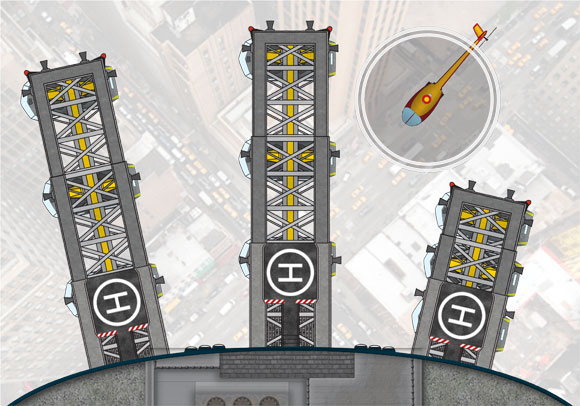
4. Once the whole system is in place then the person can begin to enter and to sit into their designated “POD SEATS” to which they are firmly seated with their own seat belt, front airbag and with its unique “neck/back/hip/leg protection seat rest”.
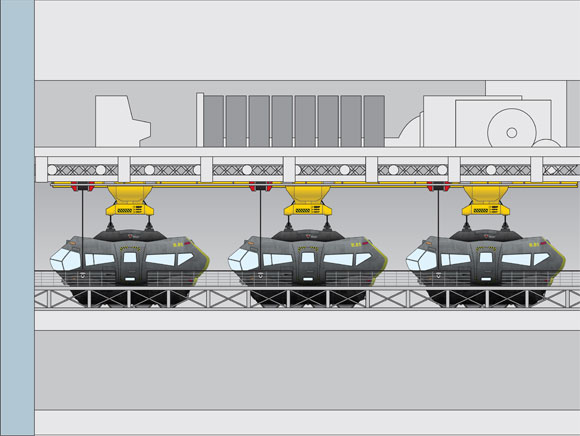
ELPES hangar inside the building
5. Once the “POD” has be classified as at full capacity or ready for evacuation the crane via an automated “pick up-attachment system”, attaches itself onto the roofing of the “POD” and even has a secondary emergency system denominated as the “magnetic system attachment system” ,which also immediate “release/attachment” in seconds the crane system with the pod during any stage of the movement/parking/holding(loading/unloading of the pod internally/externally/ELZ/DLZ).
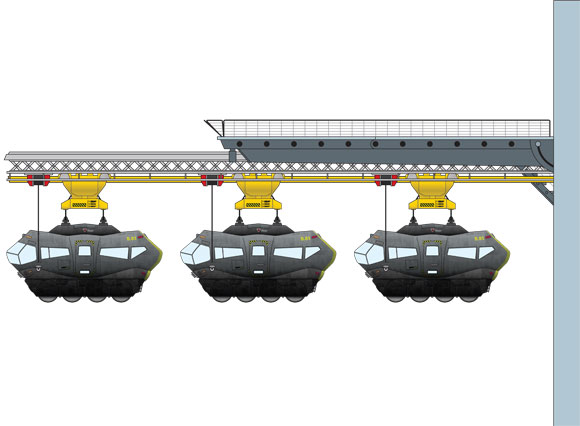
6. Due to the “PODS” design each pod has its internally physical protection technologies in place to secure a efficient and protective decent of the pod but in the event of any kind of explosion, crane failure, fire, breaking of cabling, each pod has been incorporated with its own individual parachute system which will allow full deployment once the cabling detachment system has been activated and launched.
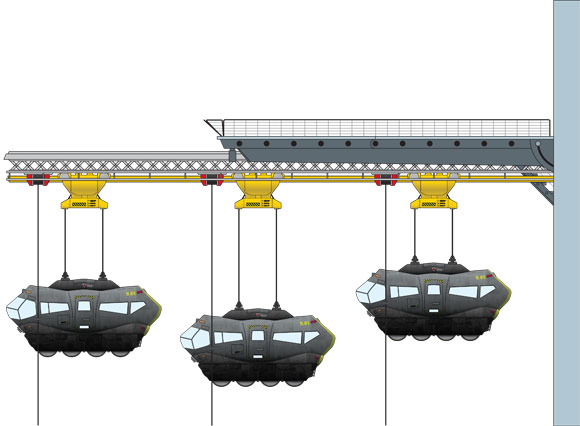
7.As each pod has internally the maximum safety measures already incorporated and the design and manufacturing of the pod is with the highest structural designs and implementation of internal and external airbags to soften any emergency “detachment/fall” of the pod in the most extreme of the cases and as a last scenario emergency route.
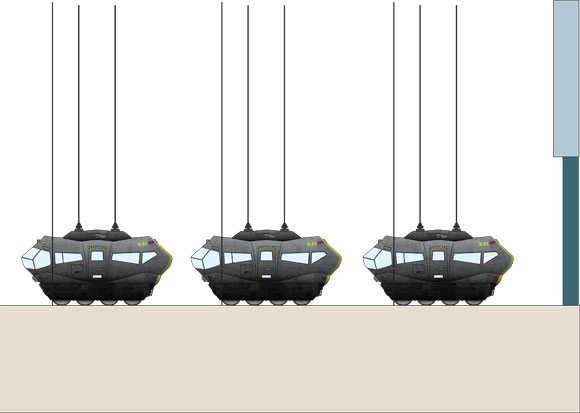
8. Once the “POD” has been landed in the “Emergency Landing Zone(ELZ)or Designated Landing Zone(DLZ), the whole roof/cabling and magnetic system is detached in seconds. In that moment via a drone, automated or manual system this pod via its “wheel /track /traction system” is then drive to a secure location to unload the personnel and then if required to be loaded with safety, security, fire, law enforcement, medical, repair services to return to the “E.L.E.Pod Station” to activate further safety and security programs via this port of entry.
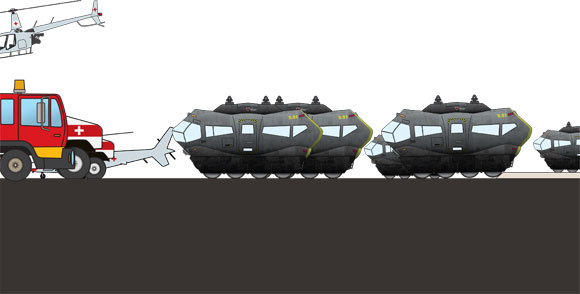
9. Once the emergency has been de-activated then all pods can be returned to their station, floor and then the whole process of closing the external entry is done automatically and as stated in point 1-3 of this explanation.
10. Due to possible “cross winds, “high heat/fire tornadoes” emerging from the building on its emergency operation a “launch-guide cable” is launched if required to the ground first to be attached to the ELZ/DLZ and thus the pod is then directed via this “guide cable” to these designated locations and will be used on its downwards travel as upwards as these winds can make the Pods move, hit, crash into the sides of the buildings or other pods thus having a “guide cable attachment” not allowing any movement from ground to the “POD Station”.
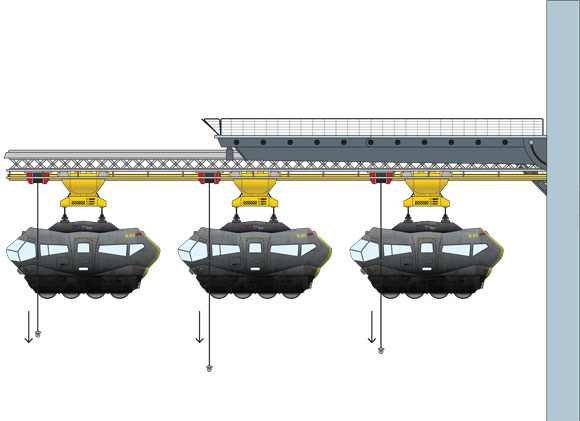
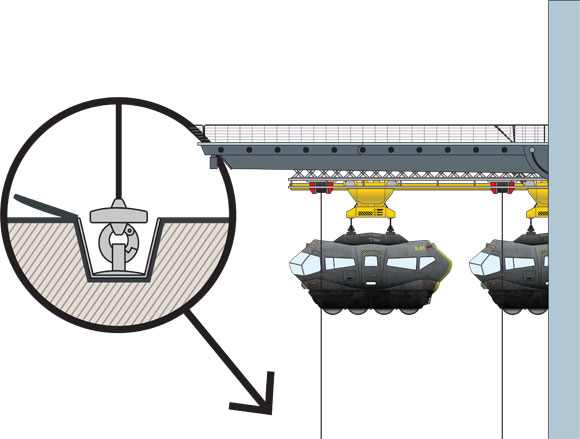
11. Al “Pods” have their own emergency air intake filter and emergency oxygen supply thus not being able to be effected by fumes, vapors, gases while inside the pod even with the pods doors open as each person has their own individual oxygen supply.
12.Each pod has been designed to have the best fire retardant Technokontrol patented anti-thermal/fire protection materials and alloys to withstand over 1000º C heat, thermal, fire, heat waves, blasts, for several hours even in the event of the “Pod Station” being part of a fire or explosion directly or indirectly.
13. Each “Pod” has been designed to have a roof parachute systems incorporated as used in low, medium, high altitude parachute usage which has been calculated to open in the event of full detachment of the cabling attachment system due to any reason. The “Pod Parachute Emergency System” has also a normal altitude detection opening system and also a pyrotechnic system especially incorporated for lower altitude emergency parachute openings.
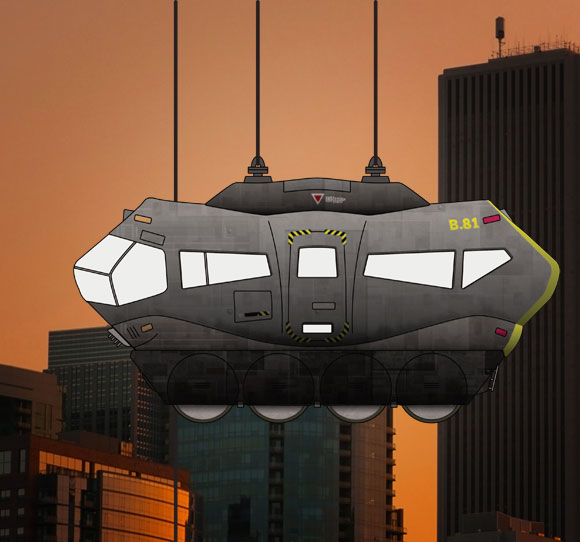
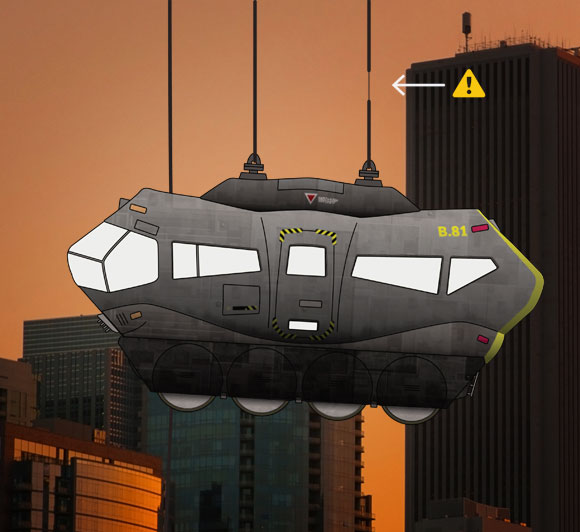
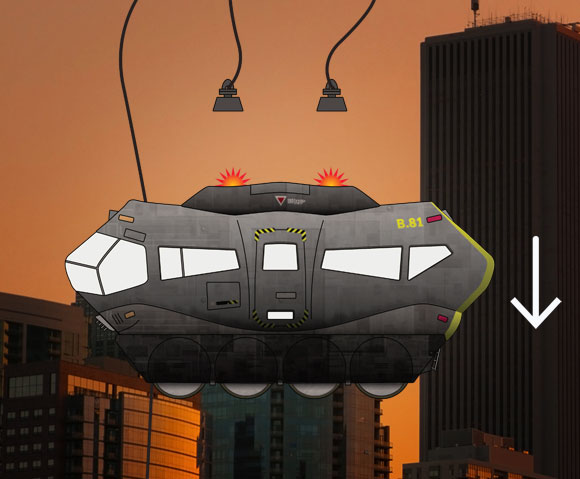
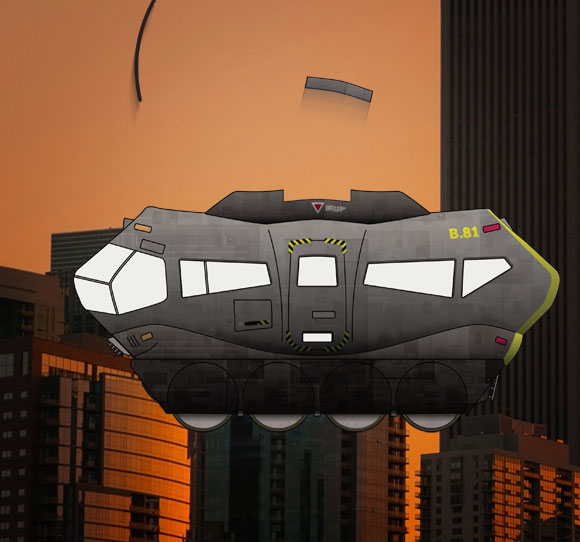
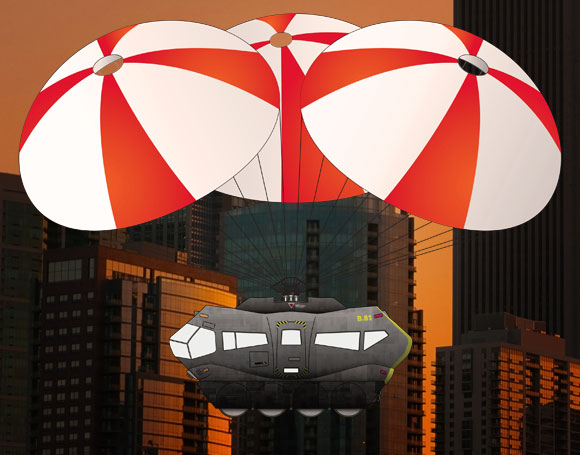
ELPES emergency landing systems - Emergency parachute
14. Due to all pods having a “wheel based /truck design” with 4-12 wheels depending on designs, size, capacity, building designs, building height, security levels and risk factors in between of the wheel base and attached to the undercarriage of the “POD”, a pre-installed , re-attachable and specialist automated “Airbag System” has been located/installed which once the “Pod” is beginning its decent via the “guide cabling systems”, “telescopic cabling systems” are activated to respond automatically if the speed of decent is too fast even with the use of hydraulic, gravity breaking/slowing down cabling brakes for a secure landing and also being activated in the event of “parachute deployment system” from an emergency free-fall/detachment scenario.
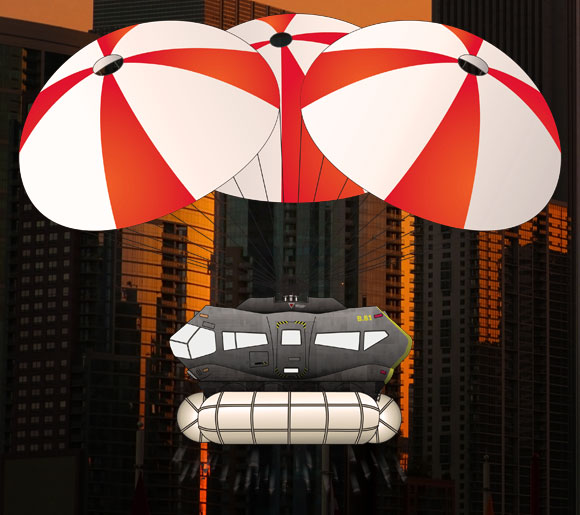
ELPES emergency landing systems - Emergency air bag
15. The “ACTIVATION” of the” POD” airbag emergency systems inside and exterior of the “POD” are determined depending of sensors, automated, pre-calculated risk factors, speed of decent, extreme and free fall movement due to air speed, angle of attack, breaking of partial cabling, crane parts, falling debris, lateral and underneath hits/bumping/crashing of other sections, building collapse, fire, heat detection, etc.
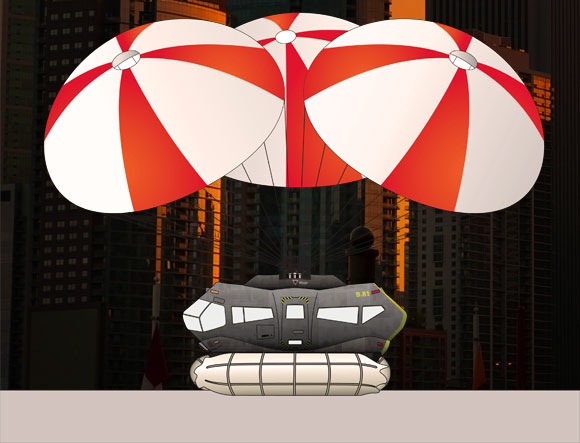
16.The meaning of “AIRBAG ACTIVATION” doesn´t mean “AIRBAG DEPLOYMENT”, thus the “POD” internal/exterior physical activation sensors will or can be activated due to these already explained emergency factors but do not mean that they will be “AUTOMATICALLY DEPLOYED BUT ONLY ACTIVATED FOR DEPLOYMENT”, thus avoiding waste of the “Airbag Deployment System” if not required, unnecessary time-cost of deployment and also the possibility of the re-usability of the “POD” with its full maximum security levels as many times as required due to any kind of emergency incident/scenario.
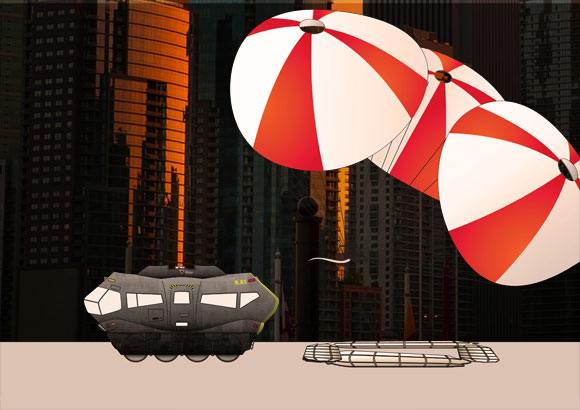
17. Each “Emergency Life Pod Evacuation Station”(E.L.P.E.S.) must be incorporated inside a specific floor, section, zone of the designed building, depending of the height of the building and number of persons they can be installed every 10-20 floors for example, thus having several designated floors especially over a certain height in which not only will it have its extreme “bunkerized anti-fire/heat/fume sector” for the entry and waiting lounges for personnel, clients, residents, employees entry points/portals to the” Pod Loading Bays/Hangers” at the “POD Station”.
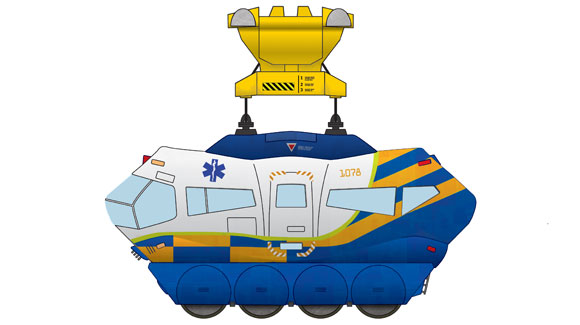
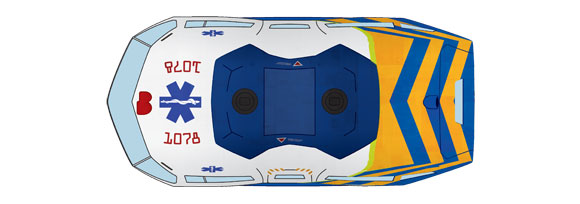
ELPES Paremedic-Ambulance
18.The E.L.P.E.S. have their own power back up systems via alternative, independent fuel powered generators as diesel for example with anti-fire/explosion fuel storage tanks patented also by Technokontrol R&D to which even in the worst case scenario will not explode and can be used in extreme heat/fire/thermal conditions for fueling the alternative-emergency power systems for the “Pod Station” to continue its emergency operations especially with the opening of the hydraulic building entry/exit port doors/window, extension of the telescopic crane, launching of pods even though they can be manually moved to launch area via the telescopic crane mechanism and also to power the return of the pods for re-usability.
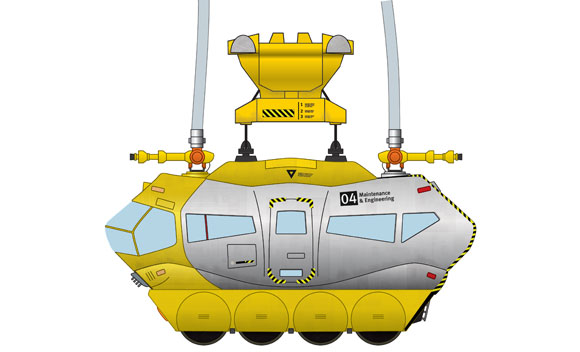
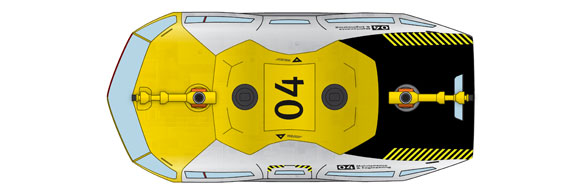
ELPES Maintenance & Engineering
19. In the event of extreme power failure, operational damage the “Pods” will or can be launched and are dropped down via the “guide cabling system and being braked, slowed down via a hydraulic braking system incorporated into the “pod/and of cabling section “ for a soft landing.
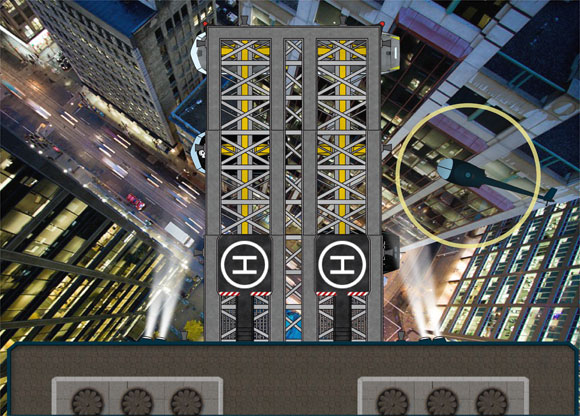
20. All “Pods” have their own electric, independent power supply reserve system incorporated for the use internally of oxygen systems, activation or/and deployment of airbags, braking systems, internal and external sensors, and finally for detachment of the cabling system and via drone, automated or manually driven sufficient power to move the “POD” via its wheel traction base to an “ELZ/DLZ” for the unloading of personnel, passengers and again to being re-used, re-designated if required returning to an operational launch, cabling section which may be in operation in another sector of the building if the original is out of service of out of bounds due to the incident.
ELPES Police - Drone Deployment inside a compromised building
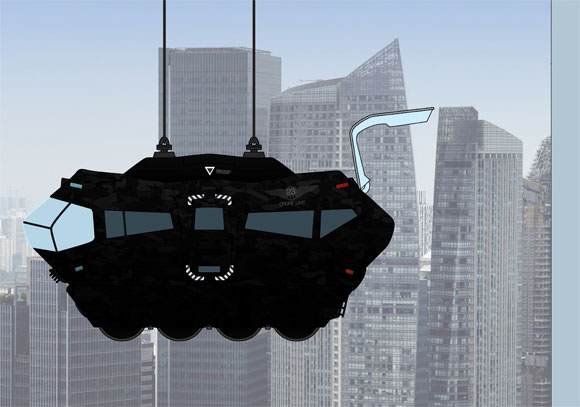
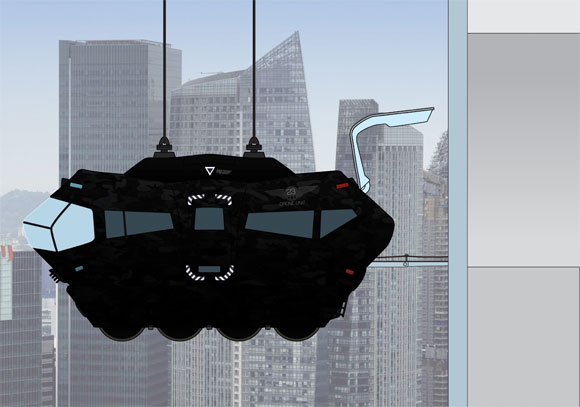
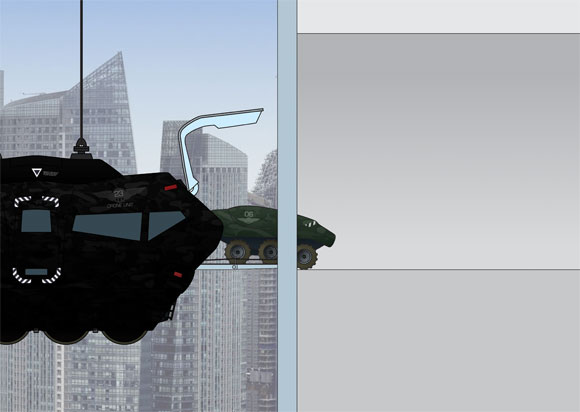
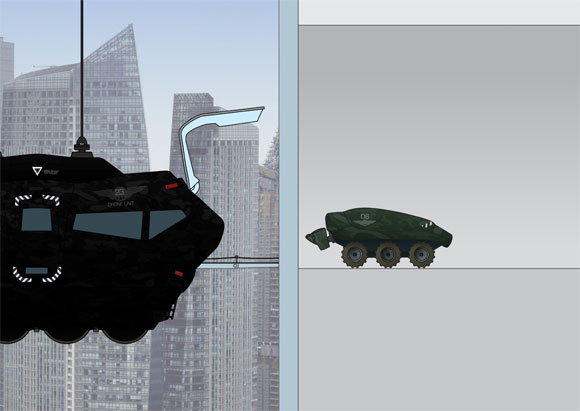
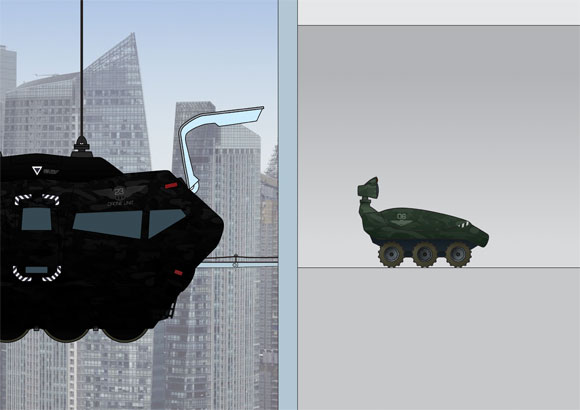
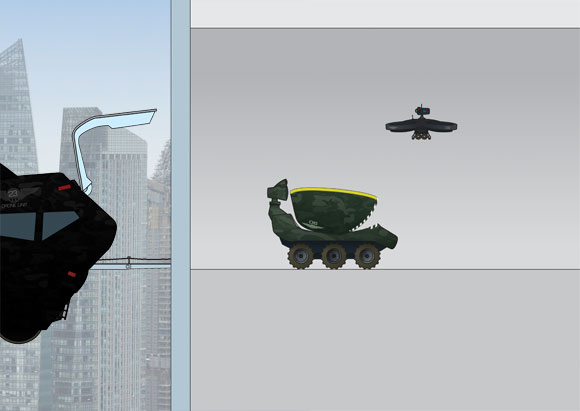
ELPES Police - Drone Deployment inside a compromised building
The Most Known Accidents, Fires, Gas Explosions and Terrorist Attacks in Medium-High Altitude World Buildings
| Building | Location | Date |
|---|---|---|
| Asch Building | New York City | March 25, 1911 |
| Empire State Building | New York City | July 28, 1945 |
| 40 Wall Street | New York City | May 20, 1946 |
| Winecoff Hotel | Atlanta | December 7, 1946 |
| 1 New York Plaza | New York City | August 5, 1970 |
| Andraus Building | São Paulo | February 24, 1972 |
| Rault Tower | New Orleans | November 29, 1972 |
| Joelma Building | São Paulo | February 1, 1974 |
| One World Trade Center | New York City | February 13, 1975 |
| Campbell Shopping Complex | Kuala Lumpur | April 8, 1976 |
| Bank Bumiputra | Kuala Lumpur | November 4, 1980 |
| MGM Grand Hotel | Las Vegas | November 21, 1980 |
| Las Vegas Hilton | Las Vegas | February 10, 1981 |
| Al Rasheed Hotel | Baghdad | July 21, 1982 |
| Northwestern National Bank | Minneapolis | November 25–26, 1982 |
| KOMTAR | Penang, Malaysia | January 23, 1983 |
| Dupont Plaza Hotel | Condado, Puerto Rico | December 31, 1986 |
| Hotel International | Zurich | February 14, 1988 |
| First Interstate Tower | Los Angeles | May 4, 1988 |
| Peachtree 25th Building | Atlanta | June 30, 1989 |
| One Meridian Plaza | Philadelphia | February 23–24, 1991 |
| UNITIC Twin Towers | Sarajevo | May 28, 1992 |
| Bosnian Parliament Building | Sarajevo | May 28, 1992 |
| Bijlmermeer Apartment Complex | Amsterdam Zuidoost, Netherlands | October 4, 1992 |
| One World Trade Center | New York City | February 26, 1993 |
| Stratosphere Tower | Las Vegas | August 30, 1993 |
| Tower 42 | London | January 17, 1996 |
| Garley building | Hong Kong | November 20, 1996 |
| Ušće Tower | Belgrade | April 21, 1999 |
| Immigration Tower | Hong Kong | August 2, 2000 |
| Ostankino Tower | Moscow | August 27, 2000 |
| World Trade Center 1 and 2 | New York City | September 11, 2001 |
| 7 World Trade Center | New York City | September 11, 2001 |
| 90 West Street | New York City | September 11, 2001 |
| Pirelli Tower | Milan | April 18, 2002 |
| Al Rasheed Hotel | Baghdad | December 26, 2003 |
| Parque Central Complex east tower | Caracas | October 17, 2004 |
| Windsor Tower | Madrid | February 12, 2005 |
| Tohid Town Residential | Tehran | December 6, 2005 |
| Transport Tower | Astana, Kazakhstan | May 30, 2006 |
| Belaire Apartments | New York City | October 11, 2006 |
| Fortune Tower | Dubai | January 18, 2007 |
| Shanghai World Financial Center | Shanghai | August 14, 2007 |
| Deutsche Bank Building | New York City | August 18, 2007 |
| Monte Carlo Resort and Casino | Las Vegas | January 25, 2008 |
| Abraj Al Bait Towers | Mecca | October 28, 2008 |
| Beijing Television Cultural Center | Beijing | February 9, 2009 |
| Bashundhara City Tower | Dhaka | March 13, 2009 |
| Abraj Al Bait Towers | Mecca | May 1, 2009 |
| al buteena fire | Sharjah | June 6, 2010 |
| Unnamed high-rise apartment block | Shanghai | November 15, 2010 |
| Dynasty Wanxin building complex Towers A and B (Tower C was unaffected) | Shenyang | February 3, 2011 |
| Unnamed Highrise | Hanoi | December 16, 2011 |
| Uncompleted high rise block | Kuala Lumpur | January 18, 2012 |
| Fico Place | Bangkok | March 3, 2012 |
| Federation Tower (East Tower) | Moscow | April 2, 2012 |
| Al Tayer Tower | Sharjah | April 28, 2012 |
| Polat Tower Residence | Istanbul | July 17, 2012 |
| Tamweel Tower | Dubai | November 18, 2012 |
| Oko Tower 1 | Moscow | January 25, 2013 |
| Torre Ejecutiva Pemex Tower | Mexico City | January 31, 2013 |
| Grozny-City Towers | Grozny | April 3, 2013 |
| Jianye Mansion | Guangzhou | December 15, 2013 |
Air Safety Pod Landing
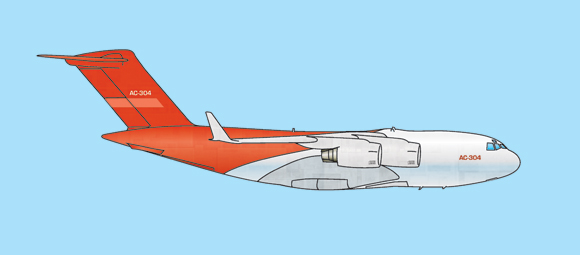
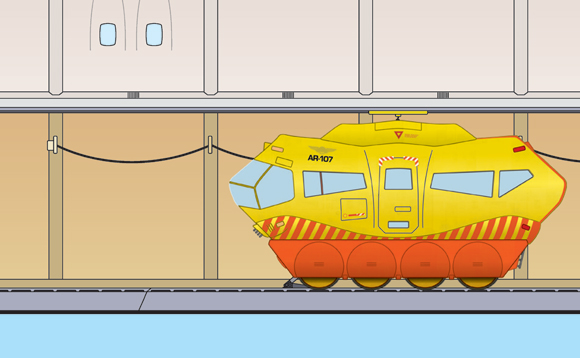
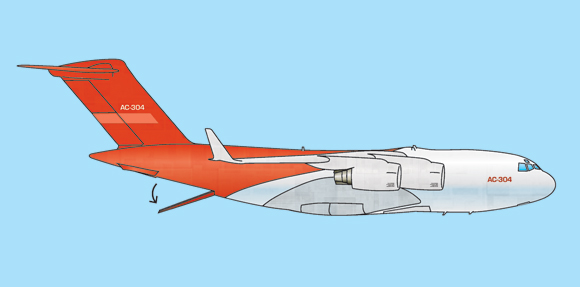
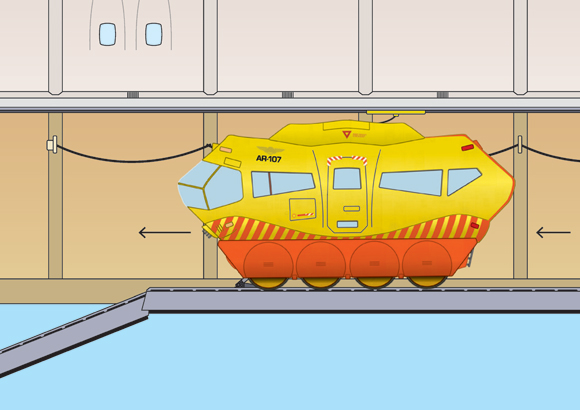
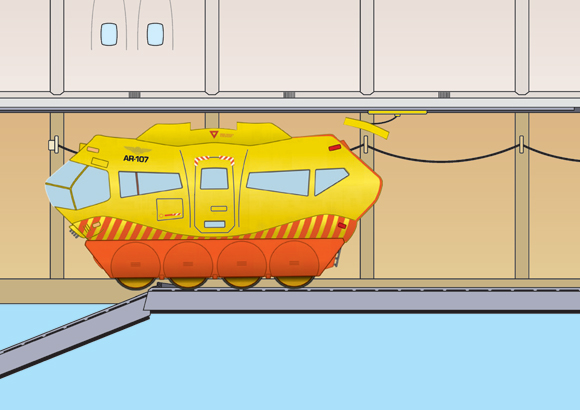
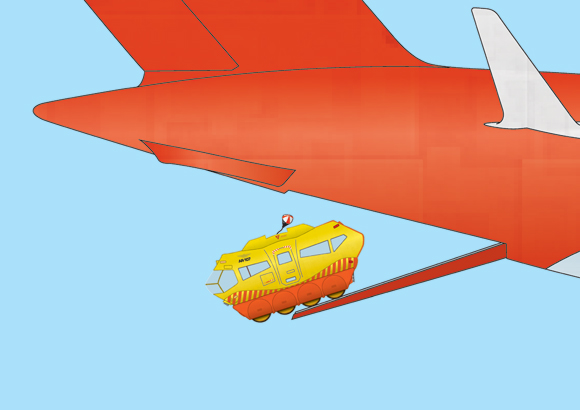
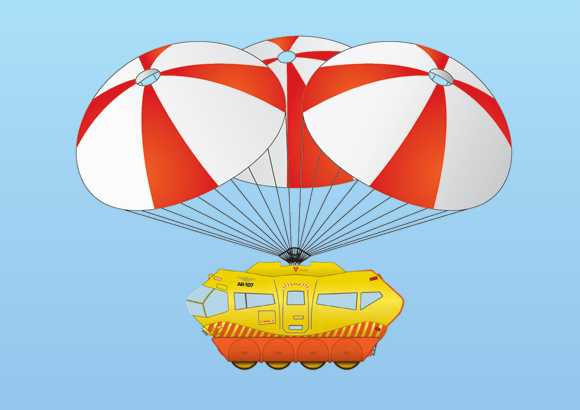
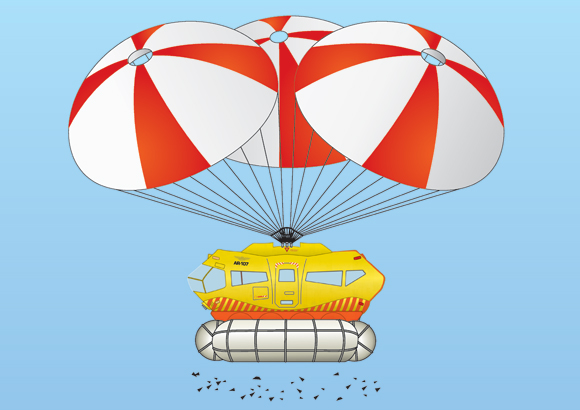
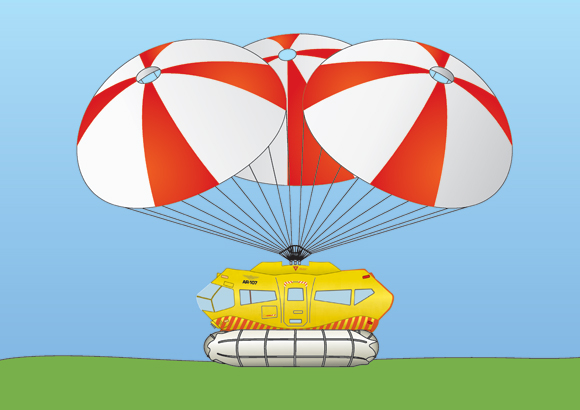
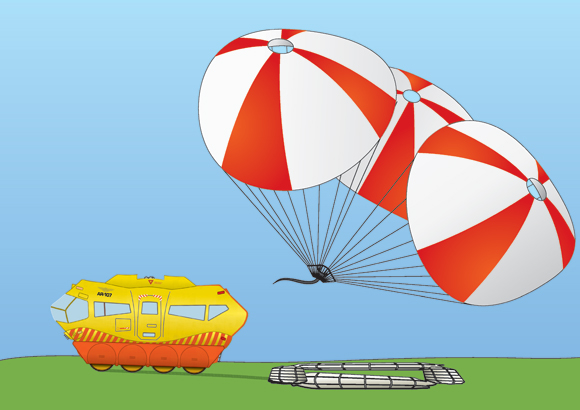
Ais Safety Pod landing safely after emergency launch
Air Safety Pod Sea Landing
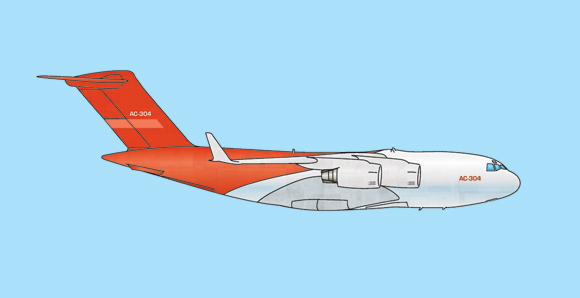
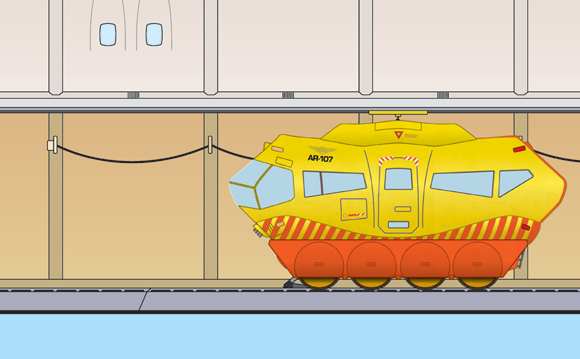
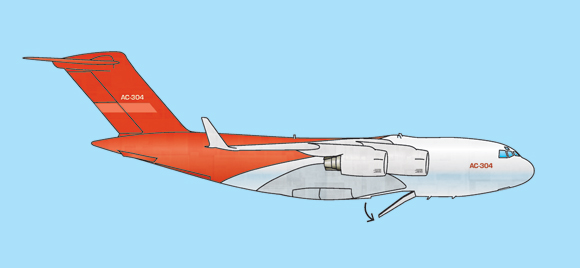
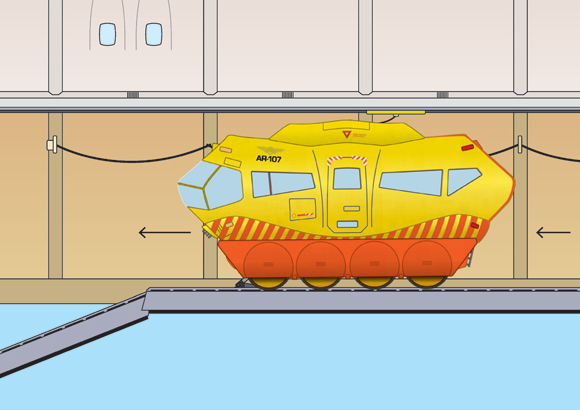
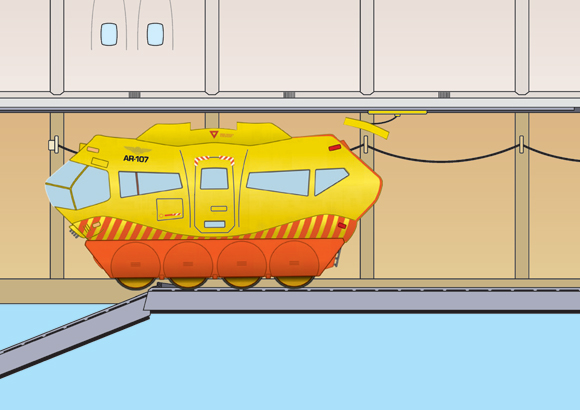
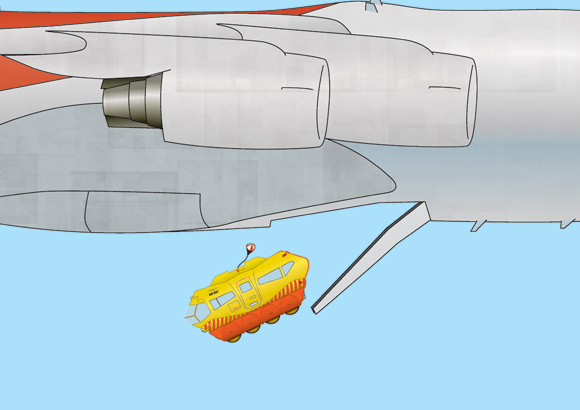
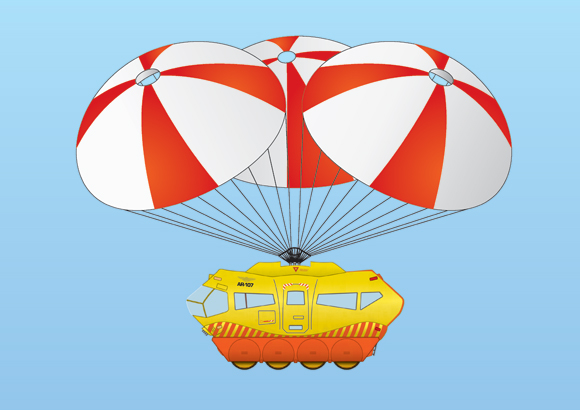
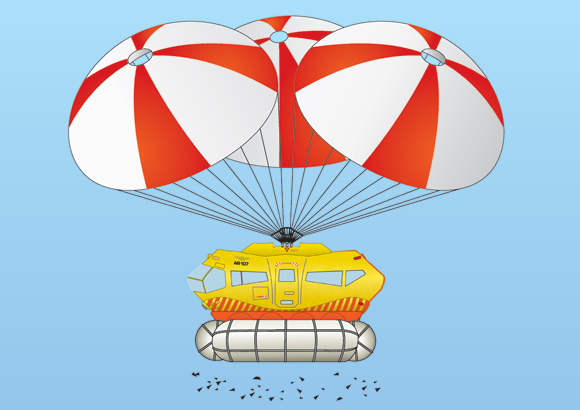
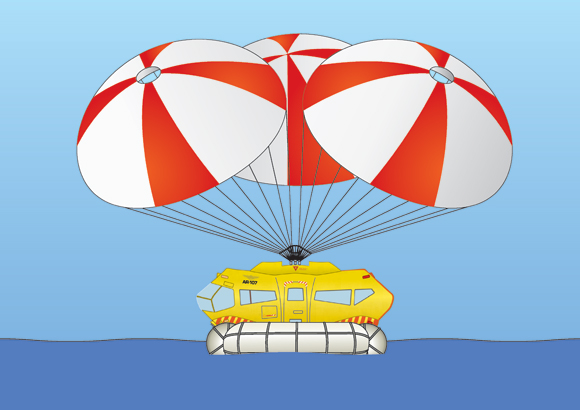
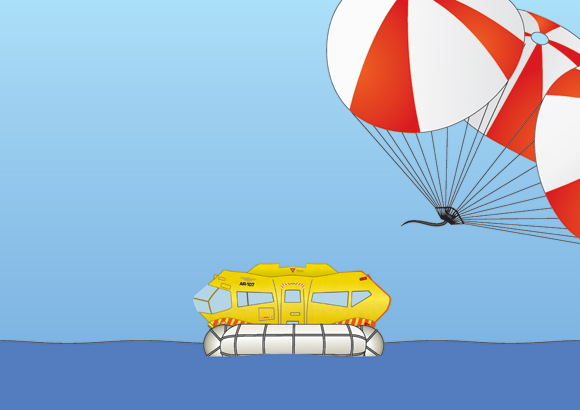
Ais Safety Pod sea landing after emergency launch
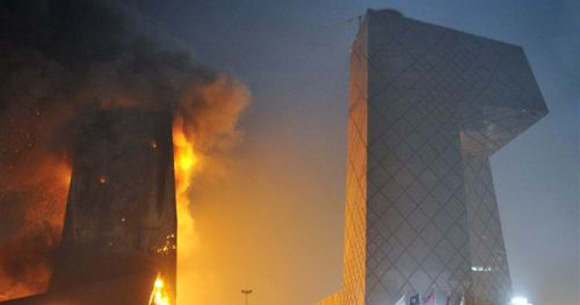
EMERGENCY PREVENTION & MANAGMENT IS EVERYTHING
There are never happy endings to any fire in any high rise structure. Whether it’s an apartment building or a business tower; hotel, apartments there are always injuries, extensive property damage and sadly, in many cases, loss of lives and every lasting psychological damage and (PTS) even post traumatic stress for life.
What contributes to this is the inaccessibility to such structures and there designs. Anyone’s chances of surviving being physically strong, young, old, disabled, injured, fume-gas effected in any disaster depends upon your speed and ability to do respond and act.
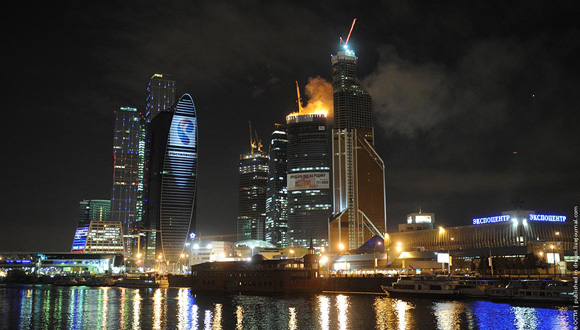
When living or visiting in high rise buildings, both these vital factors are there and anyone can be effected more or less due simply if they are asleep, on a lower or higher floor, if the emergency exits are closer or further, etc.
In most cases where fires broke out in high rises, it has taken an extreme amount of effort as well as time to get to the point of origin, fight fires and save lives by speedy evacuation as also in Search & Rescue Program(SAR/CSAR) The “Golden Hour” is the difference between life & death in many scenarios”
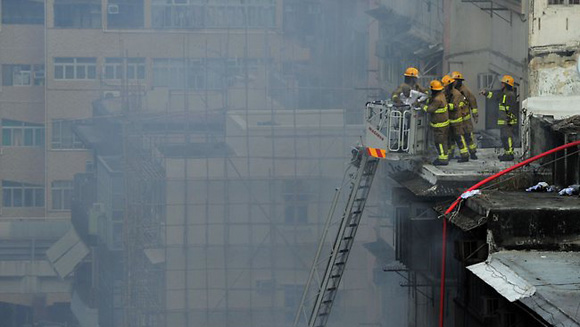
Sea Safety Pod
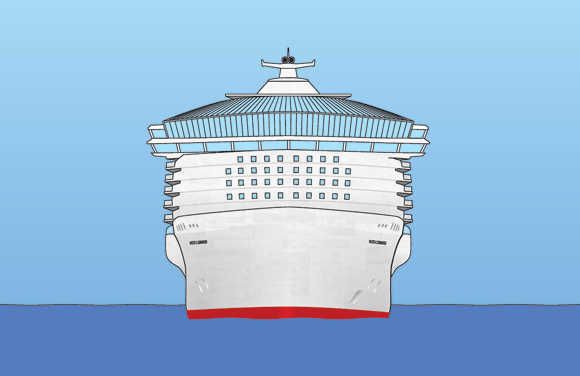
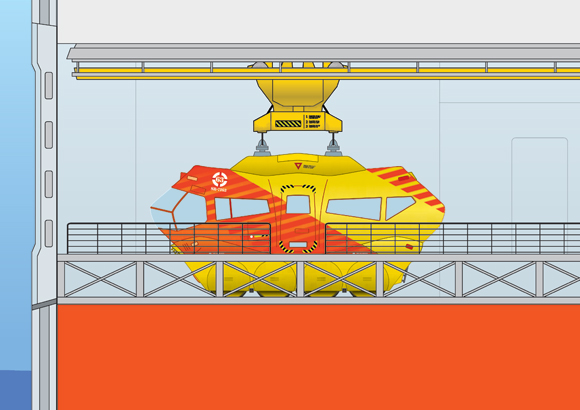
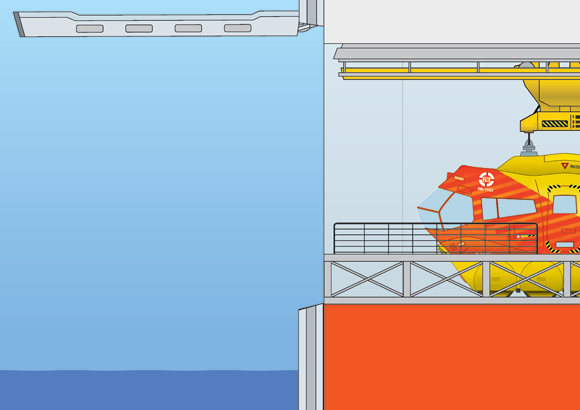
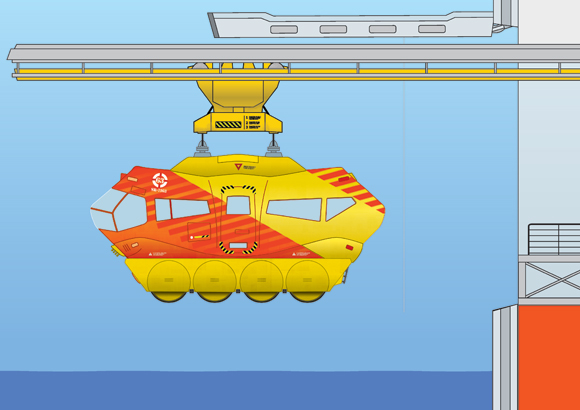
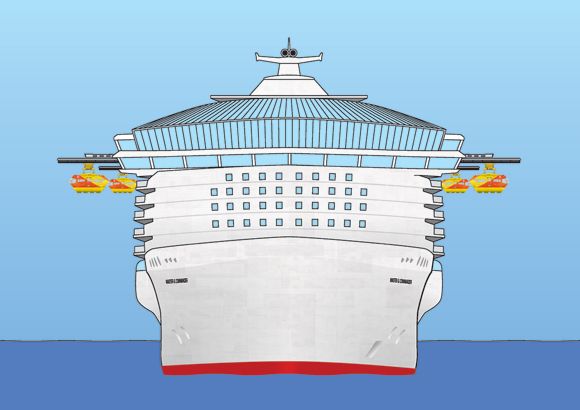
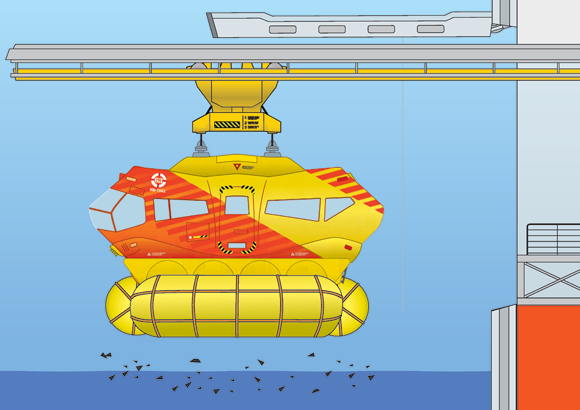
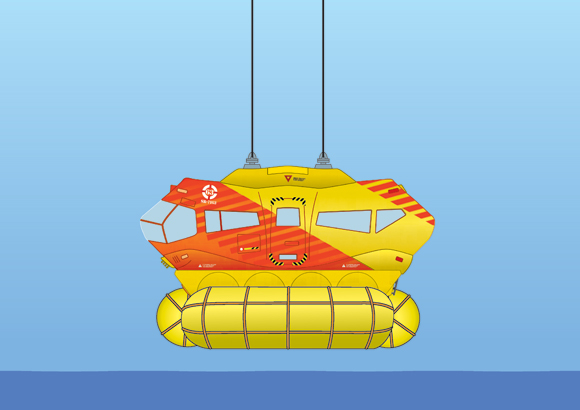
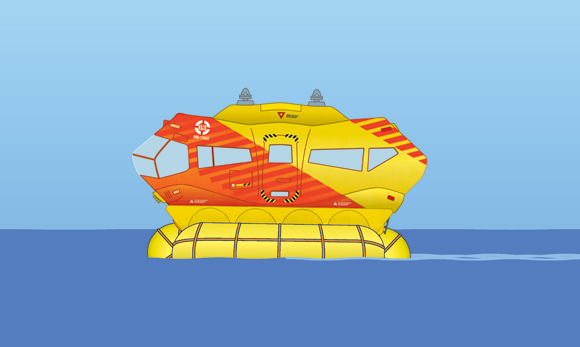
Sea Safety Pod deploying on high seas
Previously published statistics on ‘fires in high rise structures
Statistic 1
Each year, an estimated 15,500 high-rise structure fires cause 60 civilian deaths, 930 injuries, and $252 million in property loss. High-rise fires are more injurious and cause more damage than all structure.
Statistic 2
Three-quarters of high-rise fires are in residential structures and cause 25% of the total dollar loss.
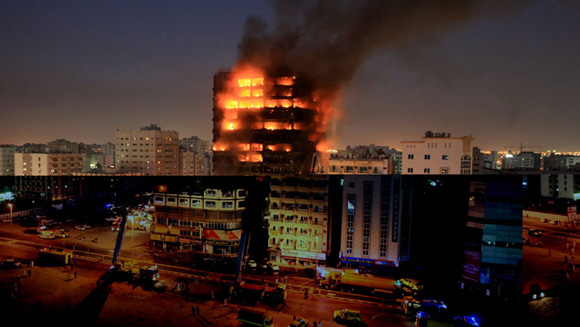
Statistic 3
The leading cause of all high-rise fires is cooking (38%), but cause patterns vary by specific property type. Sixty-nine percent of high-rise fires originate on the fourth floor or below; 60% occur in apartment buildings; and 43% originate in the kitchen.
Statistic 4
Between 2009 and 2012, an average of 16,000 high-rise fires/year took place, according to the NFPA only in the United States. Those fires led to more than 80 civilian deaths, nearly 500 civilian injuries, and $229 million in property damage/year.
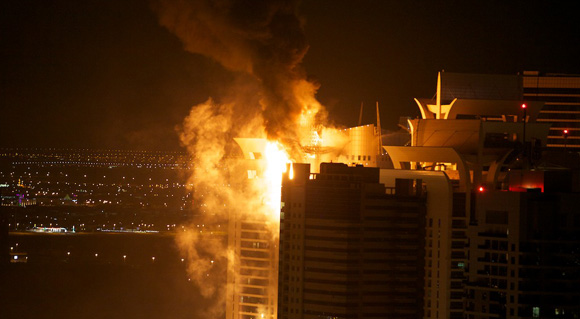
Statistic 5 - Fire truck Height-Ladder Range - Fire in High Rise
99% of the world’s fire trucks can’t reach above the 7th floor , maximum being of the 10th floor whereas MOST high rises are at-least 12 floors and above.
Whether you work in a high rise building or live in a posh new high rise right at the beach front, chances are pretty high that there will be a fire-explosion, terrorist attack, sabotage, mass kidnappings related incidents which could very well turn fatal.
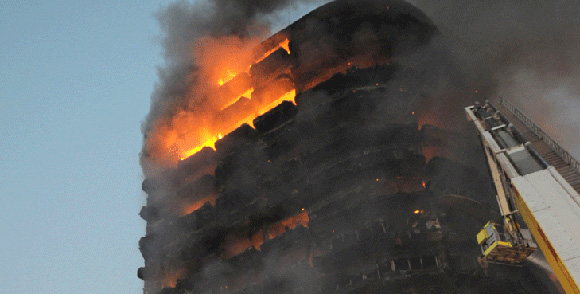
Especially now more than ever with man-made disasters such as bombings and arson taking a never before seen spike, these chances have been exponentially multiplied and being of many different reasons as political, global publicity for terrorist groups, physiological social warfare, ransom, etc.
As sad and tragic as it may seem, most people would prefer to jump rather than burn! It would be nice if more people were prepared and equipped to know EXACTLY what to do and how to do it if this were to happen in the high rise they reside or work in being able to reach an “Emergency Evacuation Life Pod Station” on several floors, sections, zones in the building to which they and their families, friends, clients, employees can be safely evacuated and saved.
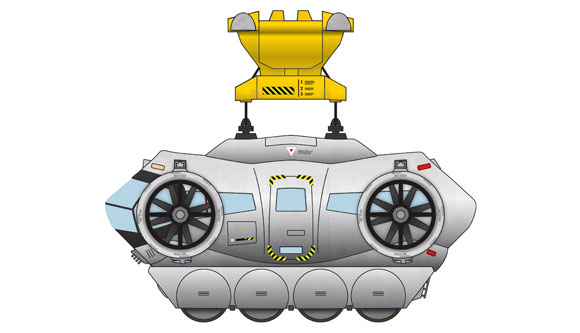
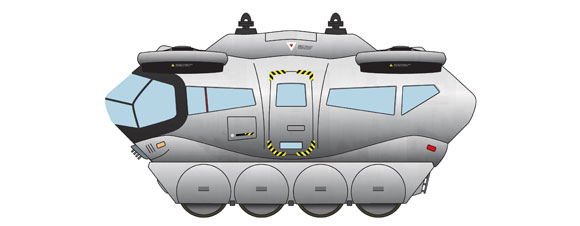
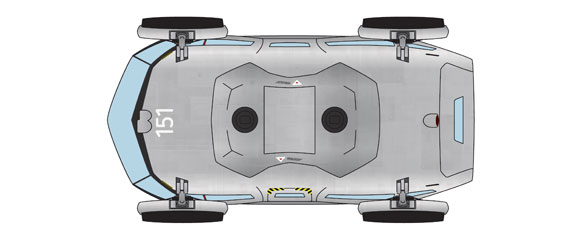
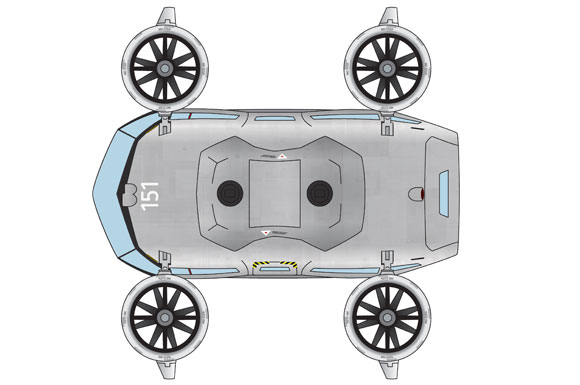
ELPES Sky Safety Shuttle
BRIEF HISTORY OF DIFFERENT ACCIDENTS, ATTACKS IN HIGH RISE BUILDINGS GLOBALLY
November 21st, 1980
The MGM Grand Hotel fire in Las Vegas resulted in the death of 84 people and 600 injuries. Hundreds of occupants were seen clinging to their balconies pleading for help. Some tragically attempted to escape by tying bed sheets together. If it wasn’t for the heroic efforts of the military helicopters retrieving occupants off the upper most balconies and roof of the 26-story hotel, there is little doubt the casualties would have been much higher.
December 31st 1980
The Dupont Plaza Hotel fire in San Juan, Puerto Rico, resulted in the death of 86 people and 140 injuries. Many were trapped in the upper floors of the 17-story hotel. Three died in the elevators. The majority of the fatalities occurred when fleeing guests were trapped inside the casino area.
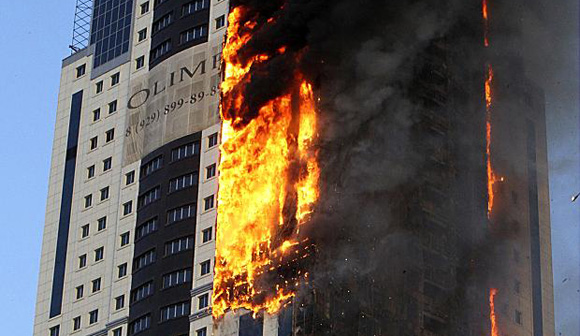
February 10th 1981
The Las Vegas Hilton Hotel fire resulted in the death of 8 people and 350 injuries. Smoke and flames spread vertically on the exterior walls until it reached the top floor of the 30-story hotel. It was ruled, the presence of highly combustible carpet on the walls and ceilings contributed to the rapid spread of the fire.
May 4th 1988
The 62-story First Interstate Bank building in downtown Los Angeles proved to be one of the most challenging and difficult high-rise fires in the city’s history. The fire, which continued unabated for 24 hours, destroyed four floors, claimed one life, and injured 35 occupants and 14 firefighters.
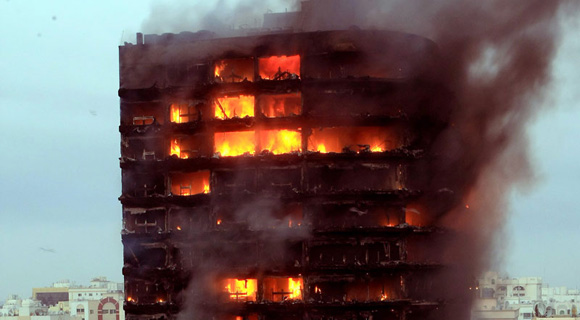
June 30th 1989
The 10-story Peachtree Building fire in Atlanta, Georgia, resulted in the death of five building occupants while injuring 20, including six firefighters.
February 23rd, 1991
A twelve-alarm fire gutted eight floors of the 38-story One Meridian Plaza building in Philadelphia, Pennsylvania. The fire raged for 18 hours. Three firefighters were trapped on a fully engulfed floor, and efforts to rescue them failed. Fire officials called off the attack and allowed the fire to ‘free burn’, concentrating their efforts instead on containment.
February 26th, 1993
A 1,500-pound bomb created a 4-story deep crater in the sub-ground level of the North Tower of the World Trade Center in New York City, causing a fire that spewed smoke into the upper levels of the 110-story building. Six people were killed and 1042 people were injured, mostly from smoke inhalation.
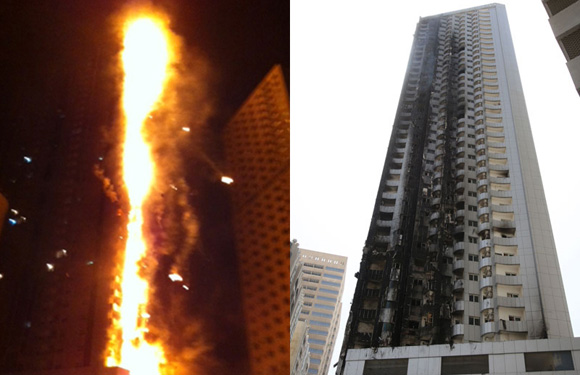
Nov. 21st, 1996
The worst fire in Hong Kong’s history occurred in an office building on Nathan Street. People were seen leaping from the windows to escape the flames. The fire was so intense it turned the entire skyscraper into a towering inferno, killing 40 people and injuring 81.
February 23rd, 1997
The Bangkok President Tower, a 36-floor complex on Ploenchit Road, caught fire, destroying the seventh to tenth floor, leaving three dead.
December 8th, 1997
At least 14 people died in a fire that engulfed the top floors of a new tower block in Indonesia’s central bank complex in Jakarta.
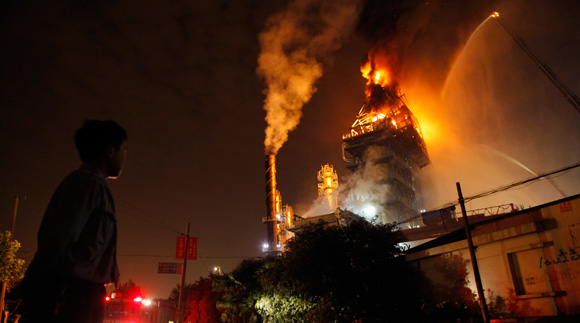
September 11th 2001
Over two thousand people lost their lives in the World Trade Center complex in New York City following the crashing of two hijacked commercial jets into the Twin Towers. Following brief fires, both steel-framed towers collapsed. Hours later, the 47-story World Trade Center # 7, a steel-framed building built in the mid-1980’s and designated as ‘fireproof’, collapsed from fire even though it was not hit by the hijacked planes.
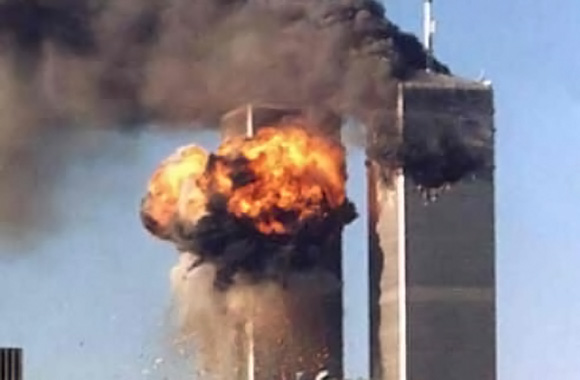
October 18th, 2004
Parque Central, a 56-story office tower in Caracas, Venezuela, the same building where in 1982 I conducted a high-rise firefighting seminar and then scaled, was engulfed in flames. For more than 17 hours, the fire raged. Two floors in the skyscraper, and several staircases, collapsed as the fire spread through 26 of the skyscraper’s 56 floors, forcing the evacuation of neighboring buildings. The temperatures were so intense the firefighters ceased operations, fearing a collapse similar to what occurred on September 11, 2001, at the World Trade Center. Though the fire was much larger and burned many hours longer than the World Trade Center fires, the building remained standing.
February 14th, 2005
The Windsor Building in Madrid, Spain, burned like a roman candle for two days. At one point, the entire 32-story skyscraper was engulfed in flames. Several of the top floors collapsed onto the lower ones and it was feared the entire structure would collapse. However, like the Parque Central fire, the skyscraper remained standing.
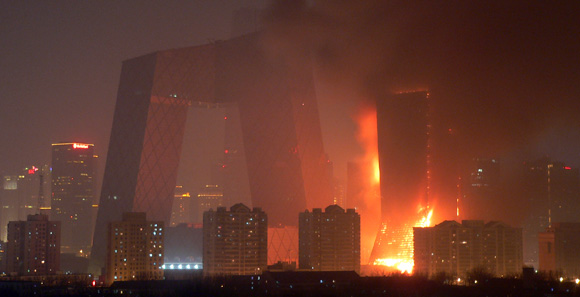
February 9th 2009
Fire in the newly constructed 44-story Mandarin Oriental hotel in downtown Beijing turned the building into a towering inferno. However, like Madrid’s Windsor Building, the skyscraper remained standing. One firefighter died, six others were injured.
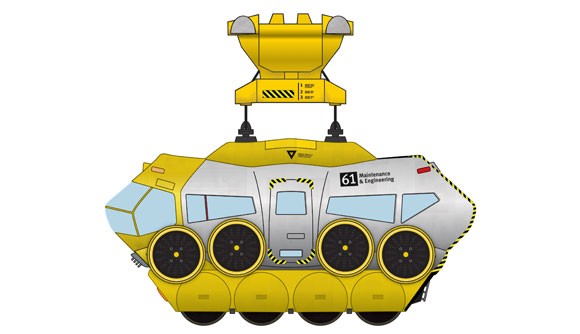
ELPES Maintenance - Drying turbines
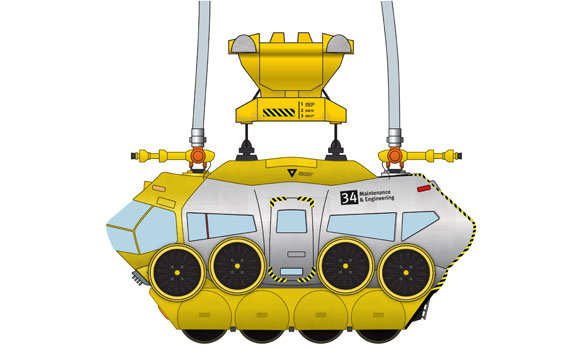
ELPES Maintenance - Drying & washing operations
COMMON DENOMINATORS
The first and most obvious fact is that skyscrapers have the potential of becoming towering infernos. In the book, High-Rise Security and Fire Line Safety, Geoff Craighead illustrates how modern high-rise buildings are less fire resistant than the previous generation, such as the Empire State Building, because of their lightweight steel construction and their potential for larger fires due to open floor designs.
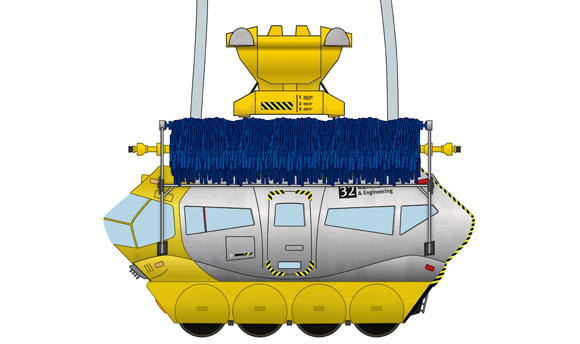
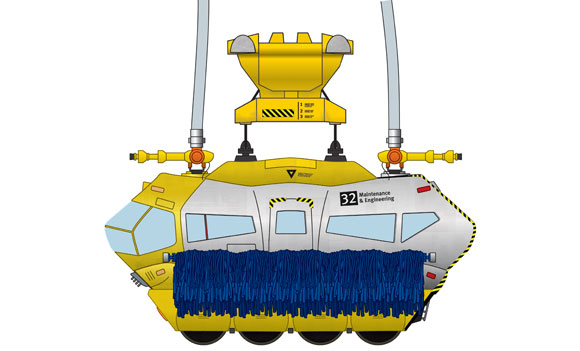
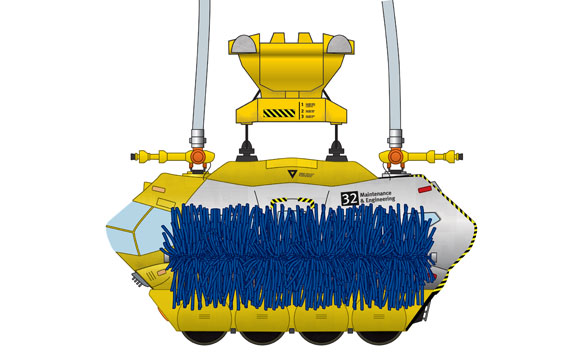
ELPES Maintenance - Sky splasher
The second and most alarming fact is that they all occurred beyond the reach of fire department ladders. Architects and developers are constructing skyscrapers even taller, acting as if 9/11 never happened. The 2,717 foot tall Burj Khalifa in Dubai, the 2,000 foot Chicago Spire (construction temporarily halted), and the 1,776 foot One World Trade Center (currently under construction), are three cases in point. Knowing what we know about the extraordinary challenges firefighters face in towering skyscrapers, there is a growing consensus that the methods used to fight fires in the upper floors need to be radically modified.
"IF YOU THINK SAFETY IS EXPENSIVE, WAIT UNTIL YOU HAVE AN ACCIDENT!"
Pod Gyro-Tilt Systems demonstration
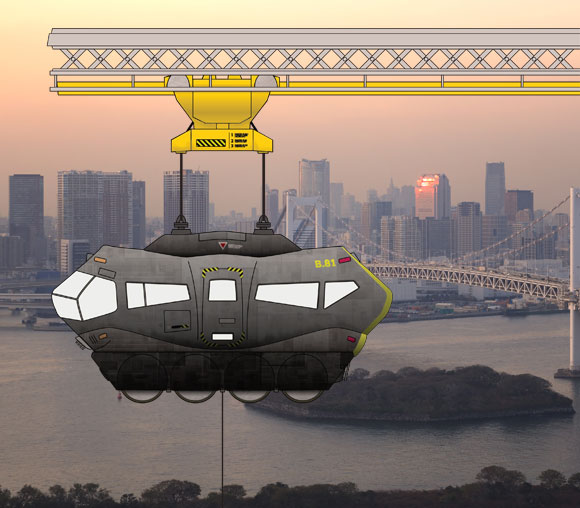
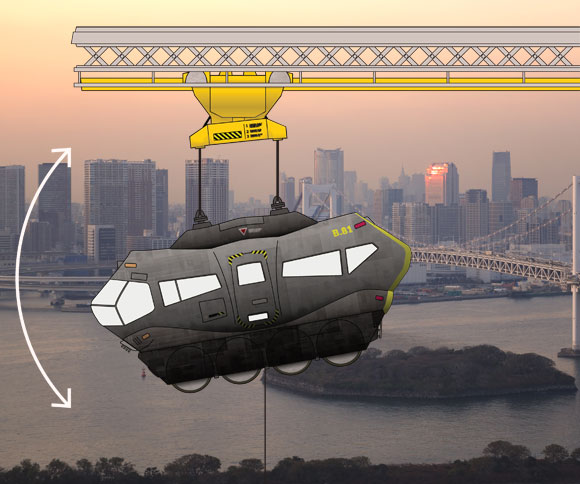
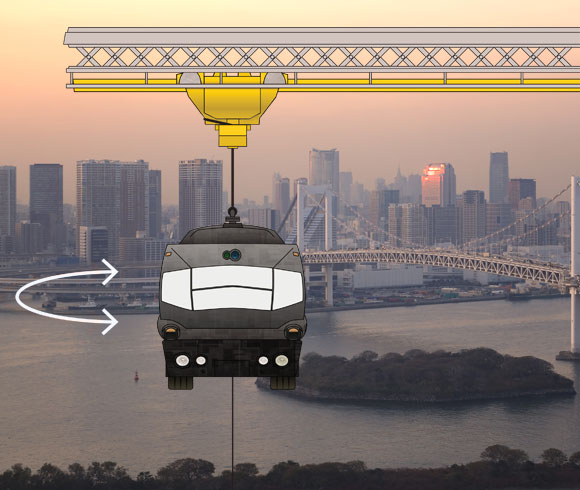
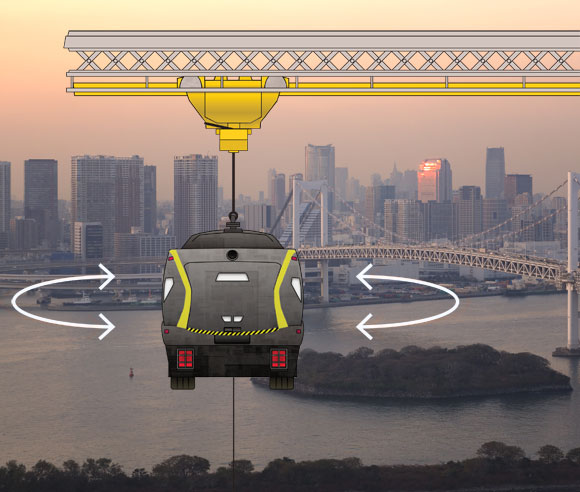
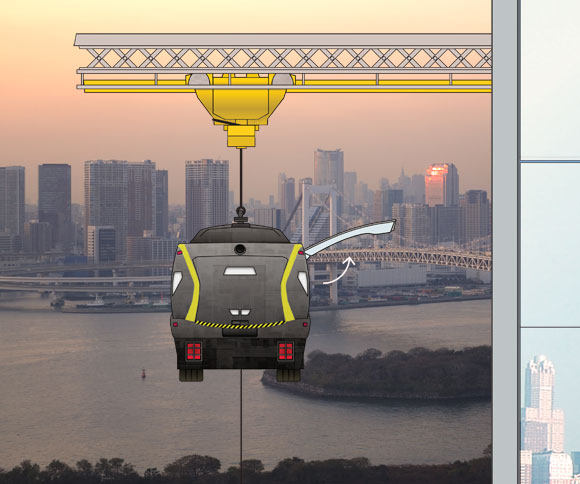
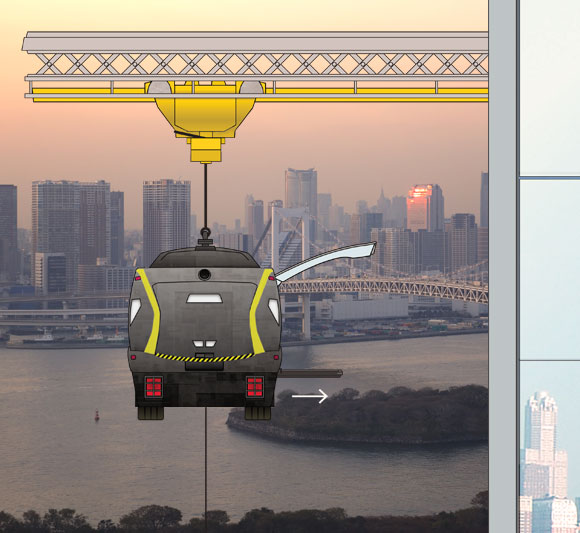
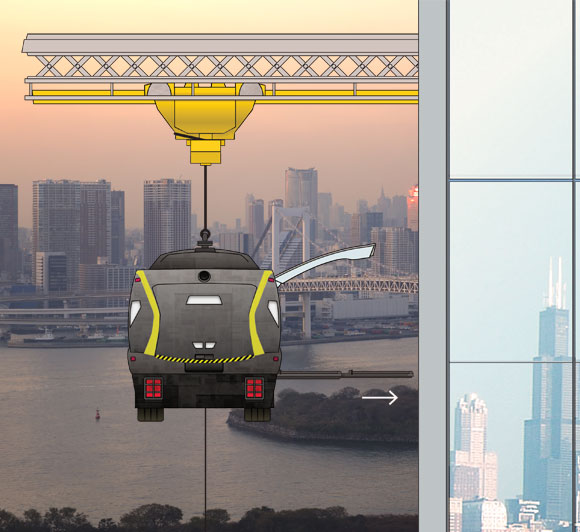
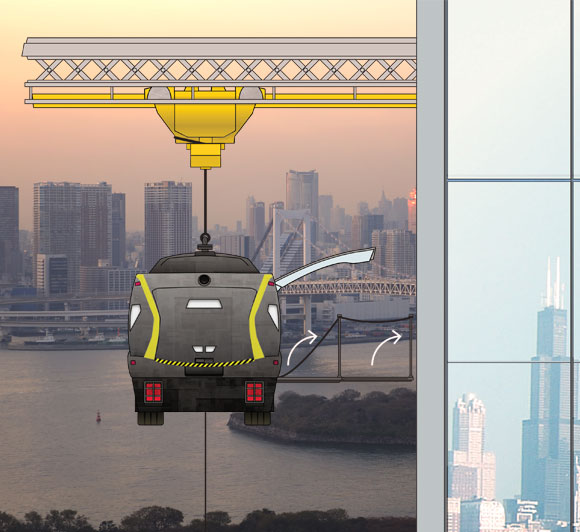
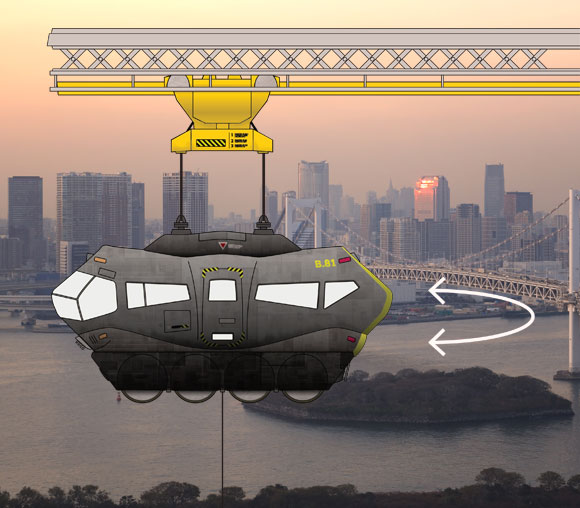
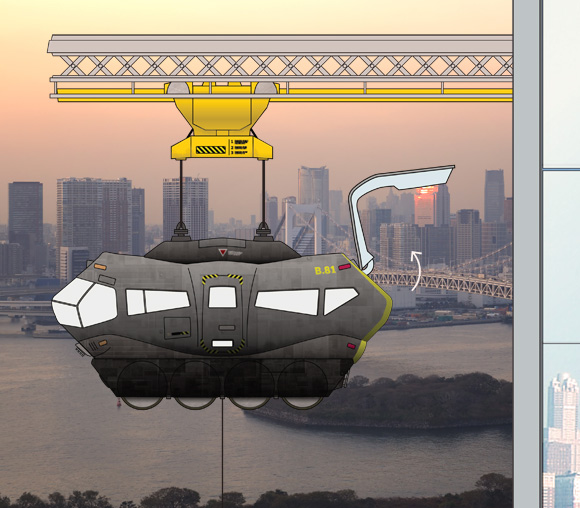
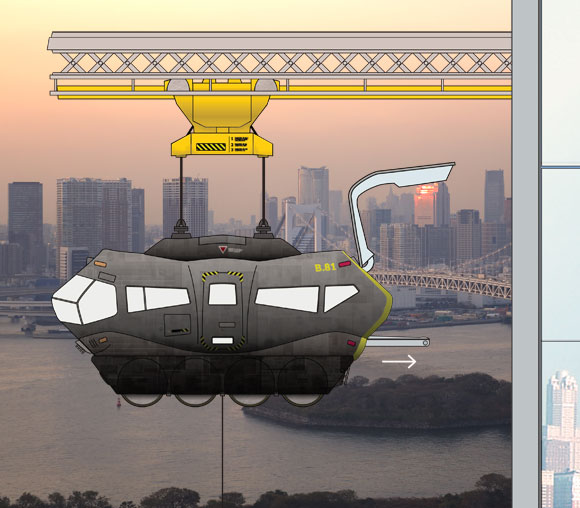
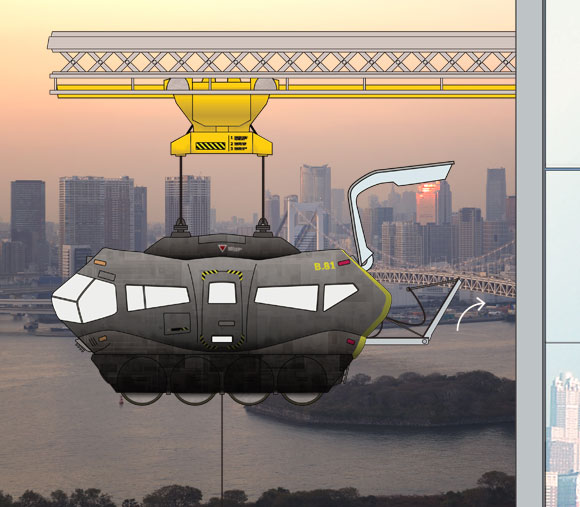
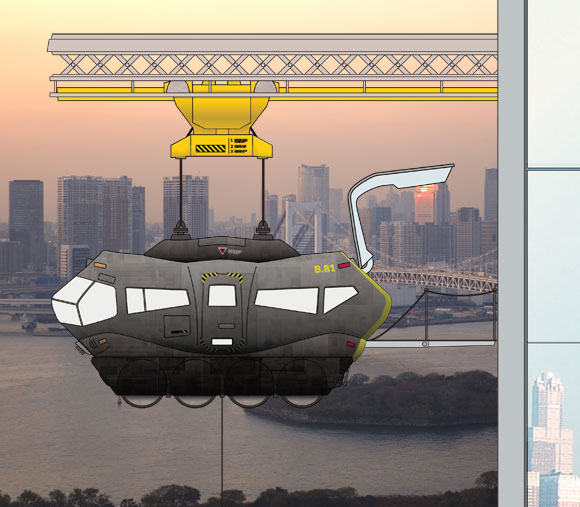
Gyro-Tilt Systems demonstration
TIME FACTOR
Sending firefighters charging up the stairs of a tall building to wage war on the 70th or 80th floor is the epitome of such an act, especially when it’s a known fact that firefighters, burdened by the weight of extra hoses and oxygen tanks, take an average of two-to-three minutes to ascend a floor. People trapped above the fire do not have the luxury of waiting several hours for the fire department to arrive, and as we learned on 9/11, and via many other accidents, explosions, crashes , terrorist attacks over the decades and still until now no real secure emergency systems has been designed which is financially and technically viable and can be introduced into already operational and projected building designs.
TECHNOKONTROL INTERNAL FIRE PROTECTION CONSTRUTION MATERIALS PANELLING/ WALL PANELS
TechnoKontrol on the Construction Industry
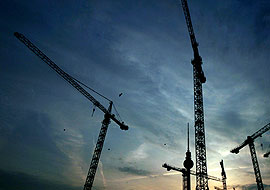
In an industry where there are more & more accidents occurring every year both on a residential and industrial basis, we at TechnoKontrol believe that it is vital that we keep working so as to improve the quality of the products used within the Construction Industry.
Therefore we promise to work alongside all governmental agencies and architects so as to work towards changing legislation in order to ensure that the construction industry becomes both safer and more cost effective in the areas of anti explosion, non flammable and heat resistant products.
Although we are constantly working so as to bring new products to the market place, at present we can provide our customers with the following products;
- Anti Explosions; non flammable; heat resistant Wall/Ceiling and Duct Systems along with Board Panels/Collar Systems which are usable both in the Industrial and Residential industries alike.
- We believe that our products are more durable than that of our competitors as our products can withstand 1600°C for up to 3 hours, whilst current industry standards shows us that our competitors products can only withstand 650°C for up to 1 hour. Our products are also thinner than that of our competitors as our products only measure 16mm in width and finally we believe that our products are more cost effective (customized quote provided on application) than what is presently recognized as the current industry standard.
- TechnoKontrol is the only producer of gas bottles or cylinders which can state that their product is 100% explosive and fire proof. Our innovative gas bottling technology can be installed into existing gas bottles/cylinders. A client can also purchase our TechnoKontrol Gas Bottles/Cylinders which weigh 25% lighter than that of the current industry standards and can be purchased at any of our distribution outlets.
- All of our products are 100% recyclable; reusable and easy to dismount/remount in either new or existing locations.
- TechnoKontrol is currently working with many of the world's largest insurance companies so as to reduce insurance premiums by between 15%-30% on any item that carry's our specially designed product.
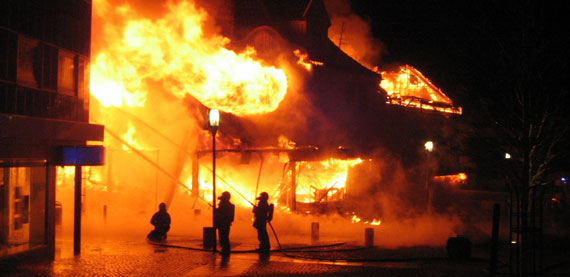
ATTACK FROM ABOVE
Instead of attacking the fire from the street level, which requires firefighters to either storm up the stairs or risk being trapped inside of an elevator, attacking the fire from the roof is an alternative that should be explored.
Robotic Firefighting Pods – Representing the first line of defense, robotic firefighting pods can be activated within minutes then remotely controlled from a hovering helicopter, a neighboring building, or a command center within the building. Using technology that has been available since the time man first walked on the moon, these robotic machines can be lowered to the source of the fire without endangering firefighter’s lives. Then, through the use of HD and infrared cameras beaming images to controllers, a steady stream of fire retardant foam or water can be directed at the flames.
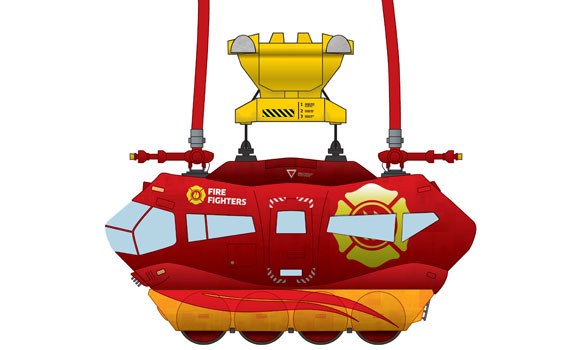
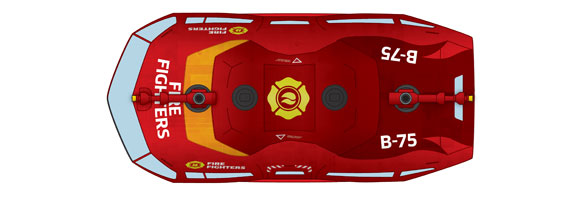
ELPES Firefighter
Manned Firefighting Pods – Designed to ‘follow-up’ the robotics, manned pods can be lowered from the roof or hovering helicopters to the hot zones. Once there, firefighters are able to chase the fire into the belly of the building with hoses feeding from the pod they exited. Think of it as a…
TWO-PRONG ATTACK
The first line of defense, robotic firefighting pods, knock the fire down. The second line of defense, manned firefighting pods, enter the scene with the intention of extinguishing the fire’s remnants. These revolutionary firefighting machines not only have the ability to combat fires in the upper floors of high-rise buildings, but also to save countless lives, including the firemen themselves. Imagine what might have happened had the World Trade Center been equipped with similar devices. The Twin Towers could still be standing!
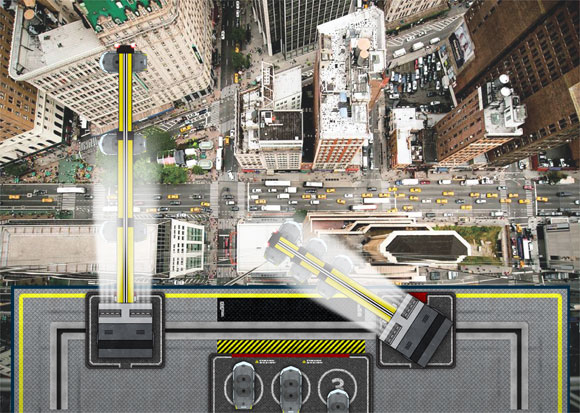
To insure the safety, security, and defense of high-rise buildings from terrorist attacks, natural acts, or accidents, within the United States.
SECTION 1.
This Act may be cited as the ‘Skyscraper Defense Act’. Herein the Skyscraper Defense Act is referred to as ‘The Act’.
Sec. 2. FINDINGS / PURPOSE
A. Findings – Congress finds the following:
1. The destruction of a skyscraper as the result of a terrorist act, natural act, or accident, within the United States would be an act of extraordinarily high consequences and could lead to the death of many innocent people;
2. The destruction of a skyscraper as the result of a terrorist act could lead to an armed conflict inside or outside the United States resulting in the death of many thousands, in the expenditure of billions of taxpayer dollars, and negatively affect America’s relationship with other countries;
3. A clear declaration by the United States affirming that the safety, security, and defense of its high-rise buildings from terrorist attacks, natural acts, or accidents, is of the highest priority will insure skyscraper defense measures meet established standards while serving as a deterrent to would be terrorists;
4. A clear declaration by the United States that the safety, security, and defense of its high-rise buildings from terrorist attacks, natural acts, or accidents, is of the highest priority would set an example for other countries and possibly increase the number of worldwide buildings with defensive measures in place;
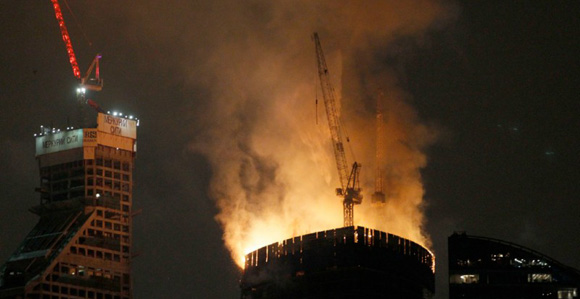
B. Purpose – The purpose of The Act is:
1. To affirm Congress’ authority and responsibility under Article I, Sect. 8, Clause 14 of the US Constitution, to make rules for the government and regulation of the safety, security, and defense of high-rise buildings from terrorist attacks, natural acts, or accidents;
2. To affirm Congress’ authority and responsibility under the Constitution Article I, Sect. 8, Clause 1, “provide for the common Defense”; Clause 10, “to define and punish … Offences against the Law of Nations”; Clause 11, “To declare War”; Clause 12, “To raise and support Armies”; Clause 18, “to make all laws which shall be necessary and proper for carrying into execution the foregoing powers”.
Sec. 3. INTERPRETATION
A. The Act is not intended to circumvent local authority, including cities, counties, and/or states, from exercising defensive measures of their high-rise buildings from terrorist attacks, natural acts, or accidents. Rather, The Act is designed to supplement local authority with federal resources;
B. The Act cannot be repealed by implication.
Sec. 4. DEFINITIONS
A. For the purposes of The Act, the following terms are deemed synonymous:
- Skyscraper;
- High-rise;
- Tall building;
B. All buildings, 25 floors or more, are covered by The Act. Buildings less than 25 floors may be covered by The Act if so ordered by the Skyscraper Defense Agency (see Section 5, Paragraph A below);
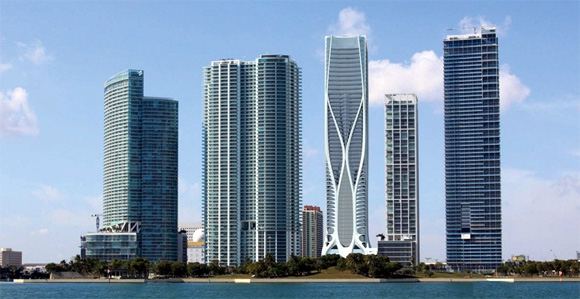
C. ‘Major City’ is defined as a city with a current census of 1 million people or more;
D. ‘Major Emergency’ is defined as an event that threatens lives within a building covered by The Act and/or the physical integrity of a building covered by The Act.
Sec. 5. DESIGNATION / PERSONNEL
A. Creation of the ‘Skyscraper Defense Agency’ (SDA) within the Homeland Security Department:
- Responsible for the safety, security, and defense of all high-rise buildings, subject to The Act, within the United States;
- Responsible for certifying in-place defensive measures, for all buildings subject to The Act, including but not limited to helicopter landing zones, robotic and manned firefighting equipment, refuge centers, and on demand oxygen systems;
- Responsible for determining which buildings less than 25 floors in the United States meet the intent of The Act. (Note: Determinant factors to include prominence in the skyline of a city and/or ‘symbolic importance’.);
- Responsible for designating specific high-rise buildings as ‘High Profile Buildings’ and, therefore, subject to additional safety, security, and defense requirements;
B. Creation of presidential appointee position, subject to senate confirmation, entitled ‘Director of Skyscraper Defense’ (DSD):
- DSD to oversee preventive measures to insure safety, security, and defense of skyscrapers subject to The Act;
- DSD to coordinate emergency responders, including city, county, state, and private, when buildings subject to The Act are involved in a major emergency;

C. Creation of teams of ‘Skyscraper Defenders’ in each major city in the United States:
- Each team to be composed of no less than 20 members;
- Each team member to be trained in all aspects of skyscraper safety, security, and defense including: firefighting, rescue, EMS, counter-terrorism, explosive detection, communications, buildering, rappelling, and base jumping;
- Skyscrapers designated as ‘High Profile’ by the SDA shall be required to maintain a team of Skyscraper Defenders 24/7 on the building’s premises in locations as mandated by the SDA;
- SDA to determine the cities or areas, outside of major cities, that warrant the creation of teams of Skyscraper Defenders.
Sec. 6. PROTOCOLS / EQUIPMENT
A. Skyscraper safety, security, and defense protocols and equipment for high-rises subject to The Act shall include, but not limited to, the following:
1. All future skyscrapers, including skyscrapers currently under construction, to incorporate an independent oxygen delivery system on each floor:
- Oxygen masks and oxygen ‘hook-ups’ to be made available for all occupants including emergency workers;
- Sufficient number of oxygen masks, based on historical trends, to be made available for building visitors;
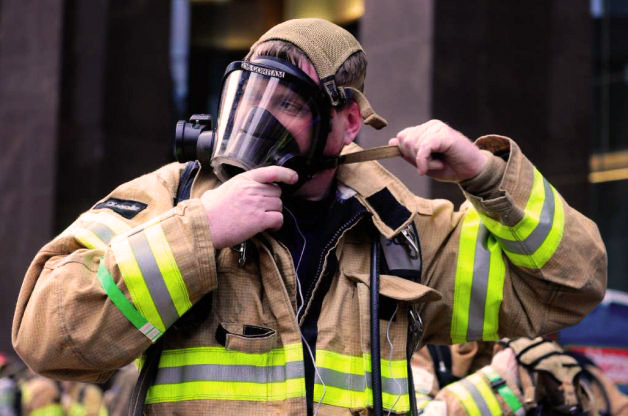
2. A dedicated squadron of no less than eight heavy-lift helicopters based in each major city in United States:
- Each helicopter to be equipped with foam canons and heavy-lift hydraulic winches;
- Each helicopter to be equipped with a computer system capable of remotely operating robotic firefighting pods in-place on a SDA designated building;
- Each helicopter to be equipped with a computer system capable of deploying ‘portable’ robotic firefighting pods onto a SDA designated building under distress, lacking functional in-place robotic firefighting pods;

3. Development of ‘firefighting pods’, both manned and robotic. Pods to be located along a skyscraper’s roof and/or a secure location accessible to heavy-lift helicopters. Both versions of firefighting pods to be armed with firefighting cannons, halogen lights, infrared cameras, and fireproof shell;
- The robotic firefighting pod (RFP) is designed as the initial response to a major fire in a high-rise building;
- The manned firefighting pod (MFP) is designed to ‘follow-up’ the RFP with Skyscraper Defenders equipped and capable of entering the building where necessary;
4. Development of fireproof ‘rescue gondolas’ for delivery by heavy-lift helicopters to the building’s roof or other locations on or near the building. Gondolas, with a loading capacity of no less than 12 persons, to be used to deliver Skyscraper Defender teams and/or remove building occupants;
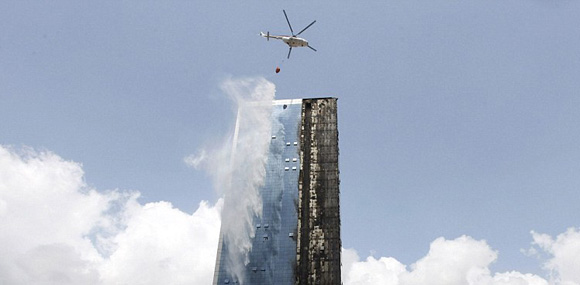
5. Development of simulation training programs tailored made for specific major cities and specific skyscrapers:
- For training of Skyscraper Defender team members for worst-case scenarios for a particular skyscraper;
- For training of Skyscraper Defender team members stationed aboard helicopters for on board solutions to worst-case scenarios;
- For preparation of permanent building occupants for building evacuations and ‘emergency instructions’;
- Insure in place defensive measures are fully operational and current;
- Generate recommendations for improvements;
6. Major cities to create ‘master plans’ for each high-rise within its metropolitan area:
- Skyscraper Defenders to oversee training of local emergency responders;
- Skyscraper Defenders to coordinate emergency activities of local emergency responders;
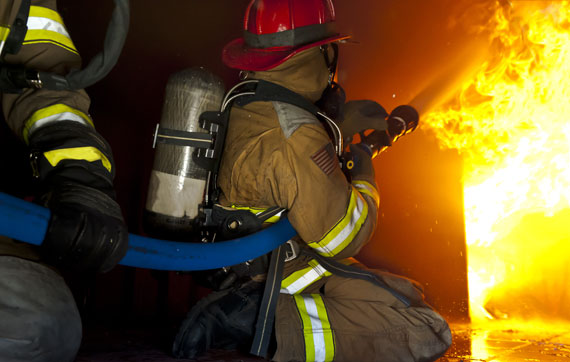
7. Future skyscrapers, including high-rises currently under construction, required to incorporate ‘refuge centers’ of sufficient size to accommodate the center’s pro-rata share of permanent building occupants and projected visitors, as appropriate throughout the building including a refuge center no further than two floors from the roof:
- Refuge center to be fireproof and reinforced as a ‘hardened bunker’ with dedicated air, water, and power supply;
- Refuge center to have emergency egress doors positioned to enable occupants to board an external elevator/escape pod for transporting to the roof and/or enable occupants access to a helicopter pad incorporated into the structural design;
8. Future skyscrapers, including high-rises currently under construction, required to incorporate no less than two SDA certified helicopter ‘landing zones’ into the design of the building:
- Landing zones to be located on the roof and/or other locations via a system certified by the SDA;
- Skyscrapers requiring multiple refuge centers shall be required to have additional helicopter landing zones, the number to be determined for the specific building by the SDA;
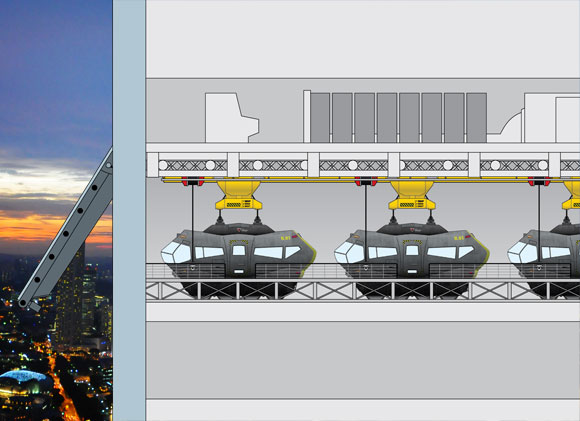
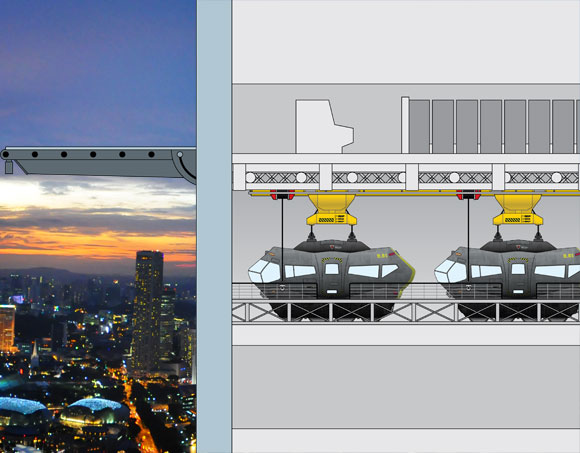
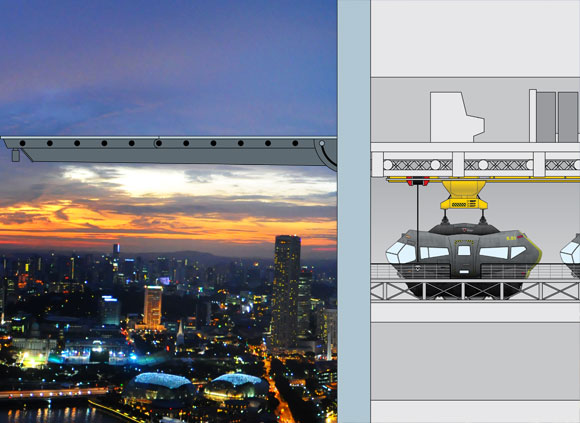
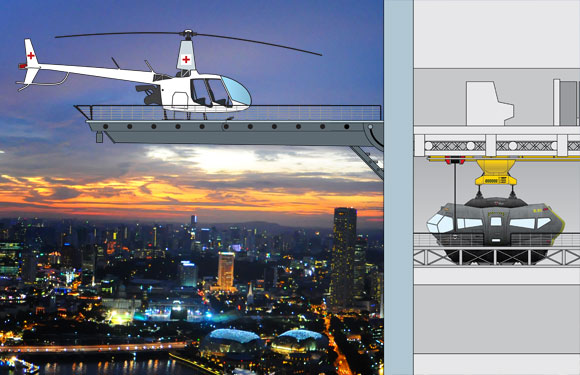
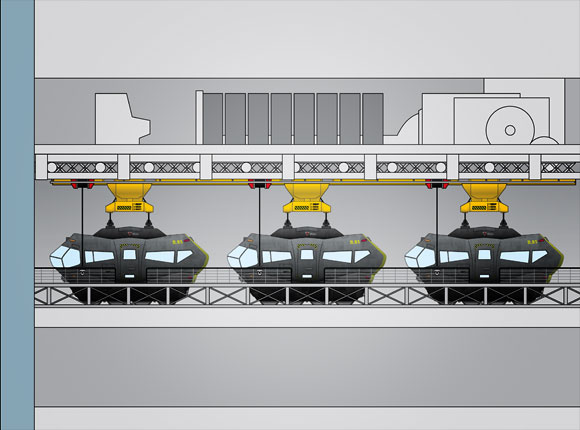
ELPES Hangar & Heliport
9. Future skyscrapers, including skyscrapers currently under construction, to incorporate external fireproof elevators/escape pods:
- Each external elevator /escape pod to be equipped with dedicated power and air supply;
- Each external elevator /escape pod to be compartmentalized in the upper refuge center or incorporated into the architectural design of the building’s exterior;

10. Future skyscrapers, including high-rises currently under construction, shall incorporate emergency egress stations on each floor for the purpose of evacuating occupants via external elevator/escape pods;

ELPES Sky Safety Shuttle
11. Future skyscrapers, including high-rises currently under construction, to incorporate dedicated standpipes on each floor plus:
- Sufficient fire hose to adequately cover the floor;
- Additional firefighting equipment deemed necessary by ‘Standards and Guidelines’ issued by the SDA;
12. Permanent building occupants required to attend annual ‘Building Emergency Seminar’ conducted by Skyscraper Defenders:
- Operation of standpipes and use of hose;
- Basic fire suppression techniques including creation of fire blocks;
- Evacuation procedures;
- Review of the building’s built-in defense;
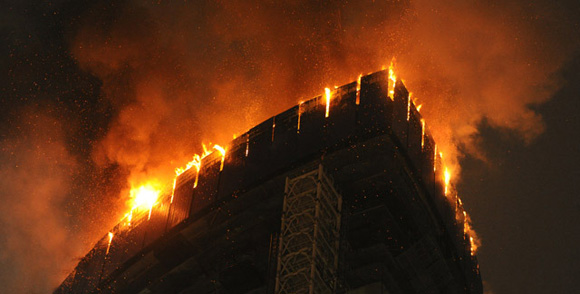
13. All future skyscrapers to incorporate ‘green’ building materials (defined as 100% fireproof and free of toxic chemicals such as ‘cyanide’):
- Carpets, furniture, cabinets, computers, draperies, and other materials introduced into the building, to be made from ‘green’ materials;
- Future building designs to incorporate green technology exceeding current LEED’s strictest requirements with a goal of creating an energy independent, completely self-contained, skyscraper;
14. Due to a plethora of used airplanes and unregulated airways, and the possibility of missiles, The Act supports the development and deployment of an anti-aircraft/missile system utilizing a sonic blast of air or sound to ward off rogue aircraft and missiles;
15. Existing skyscrapers, deemed by the SDA to be ‘a high profile terrorist target’, are required to retrofit:
- Retrofits to include helicopter landing zones, refuge centers, firefighting pods, external evacuation pods/elevators, and emergency egress stations;
- Availability of low interest, government loans and tax incentives to cover cost of retrofits;

ELPES Firefighter
16. Establishment of a rating system for skyscraper safety. Factors such as, but not limited to, sprinkler systems, standpipes, helicopter pads, roof top access, refuge centers, and firefighting pods, will be quantified then converted into a numerical score. Achievement of a minimum score enables a high-rise status as ‘Skyscraper Defense Certified’. A building’s status will be regularly updated and available to all concerned parties, including fire departments, police departments, insurance companies, banks, and commercial real estate companies, via the SDA’s website;
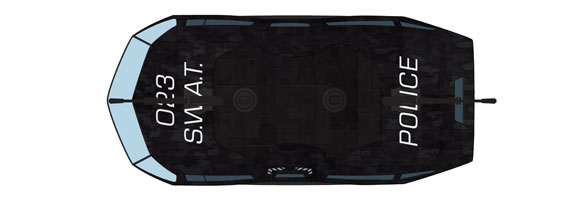
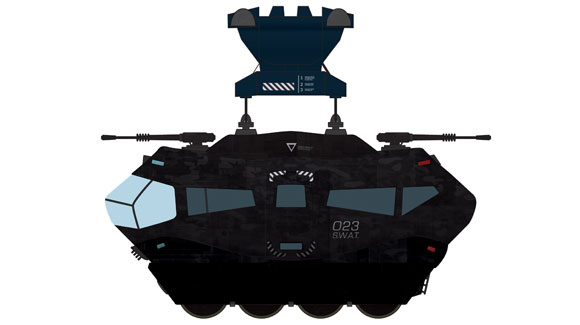
ELPES Police-SWAT
17. Should a major emergency occur involving a skyscraper covered by The Act, the SDA will appoint an investigative team, including forensic experts, structural engineers, and criminal investigators, to determine the cause of the calamity:
- Based on the results of the investigation, the SDA may make recommendations for existing and future skyscrapers;
- SDA’s investigation to be fully transparent;
18. High-rise building occupants to be afforded an official ‘Occupant’s Bill of Rights’ insuring their safety is paramount and includes:
- An occupant’s right to know their building’s safety rating;
- 24/7 access to the roof;
- 24/7 availability of oxygen to all floors;
- Regular evacuation drills to be held in conjunction with local emergency responders.
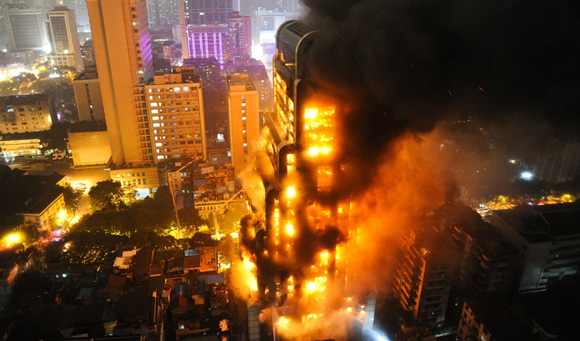
Technokontrol Certificates & Associations
Technokontrol Manufactures, Designs & Researches our safety products in the European Union at the highest possible International Accident,Health & Safety standards.
TechnoKontrol is a member of the NFPA
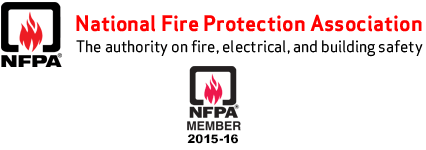
TechnoKontrol Products are ATEX Compliant
(European Antiexplosive Safety Directives)

Technokontrol's Products & Services are insured by

Certificates



































Videos
- 2 Young Firemen Fall from High-Rise
- Luxury Skyscraper Hotel on Fire in Russia's Grozny, Chechnya
- Dubai Skyscraper Burns
- Video of Shanghai Skyscraper Inferno as 53 killed
- Skyscraper in China Catches fire
- Skyscraper on Fire: Europe's Tallest-to-be Tower Burns in Moscow
- Towering Inferno Engulfs Turkish Skyscraper
- The Windsor Tower Fire in Madrid Spain
- Criminal Probe Into NY Skyscraper Fire
- Beijing Skyscraper Fire - The Silence is Deafening
- NYC Skyscraper Fire Leaves 1 dead, 7 Injured
Documentation
- NFPA High Rise Building Fire Report
- NFPA Guidelines to Developing Emergency Action Plans for All-Hazard Emergencies in High-Rise Office Buildings
NFPA Evacuation and Planning Information
- Emergency evacuation planning guide for people with disabilities
- U.S. High-Rise Building Fires" Fact Sheet
Products
What is B.L.E.V.E. explosion?
TechnoKontrol Wikipedia

TechnoKontrol: 1st in Spain for own Technology patents 2013 & 2014

- Ministerio de Industria Turismo y Comercio-OEPM
Technokontrol, the number 1 corporation in Spain filing for its own technology patents, trademarks and utility patents (SPA) - OEPM 2013 The year in numbers (SPA)
TechnoKontrol has been fully verified and certified by Bureau Veritas

Certificates
- ISO 9001 - ES108784-1
- ISO 14001 - ES108782-1
- ISO 45001 - ES108783-1
- ISO 4126
- ISO 28000
- ISO 37000
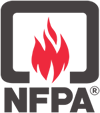
NFPA-National Fire Protection Association
NFPA-Asociación Nacional de Protección contra el fuego
TechnoKontrol is a member of the NFPA
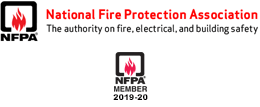
NFPA 69: Standard on Explosion Prevention Systems, 2016 Edition
Prevent deflagration explosions due to combustible dust particles, gases or vapors with NFPA 69. Combustible dust, gases and vapors produced in industrial settings can pose a significant safety hazard.NFPA 69: Standard on Explosion Prevention Systems offers definitive guidance on explosion protection and prevention systems.
ATEX - European Antiexplosive Safety Directives

- ATEX Guide: Protection in explosive atmospheres
- ATEX-EU/HAZLOZ-USA/NFPA-USA/DSEAR-UK/Explosion Directives TechnoKontrol Additional Anti-Explosion Data
- ATEX Directive in EU Directives
Dangerous Substances and Explosive Atmospheres Regulations - United Kingdom/ATEX

United Nations Economic Commission for Europe - UNECE - TechnoKontrol

- TechnoKontrol information for the UNECE BLEVE working group
Proposal transmitted by the governments of Spain and France
The European Parliament and The Council

Technokontrol's Products & Services are insured by

Dossiers TK Group of Companies
TK-Global Engineering - Where efficiency and reliability become a reality


BP World Report
Static Electricity Dangers and Protection
- Static Electric Discharge Hazard On Bulk Oil Tank Vessels
- Static Electricity - ISGINTT
- Dangers of static electricity and protection in aviation
- Static Electricity - IAPA
- U.S. Chemical Safety and Hazard Investigation Board
US Department of Transport
USA Chemical Safety Board
An independent federal agency investigating chemical accidents to protect workers, the public, and the environment.
About the CSB
CSB Safety Videos
- Chevron Richmond Refinery Explosion
- Deadly Contact
- West, Texas Real Live Blast Damage Video
- Hot Work - Dupont Explosion
- Static Sparks Explosion in Kansas
- Danger of Flammable Gas Accumulation
Articles
- Energy Sector Vulnerabilities: Petroleum (Spanish)
Documentation
- E.U. Strategic Fuel Reserves Directives 2012
- E.U. Strategic Fuel Reserves Directives 2006
- Protección de Infraestructuras Estratégicas y Críticas en la U.E. (SPA)
- Institute of Petroleum - Guidelines for Soil, Groundwater and Surface Water Protection & Vapours Emissions
- Ley de Hidrocarburos y de Seguridad Nacional de Abastecimiento (SPA)
- Protección de Refinerías (SPA)
- Almacenamiento Inflamables Combustibes (SPA)
- Almacenamiento Productos Químicos (SPA)
- Directiva del Parlamento Europeo y del Consejo 94/9/CE, relativo a los aparatos y sistemas de protección para uso en atmósferas potencialmente explosivas (SPA)
 Safety Products System
Safety Products System Eco-Energy Power Plants
Eco-Energy Power Plants TK Aviation
TK Aviation Environmental Industries
Environmental Industries Mining
Mining Petroleum Industry
Petroleum Industry Industrial Projects
Industrial Projects Maritime Industry
Maritime Industry Military Vehicles
Military Vehicles Transportation & Auto
Transportation & Auto Construction Industry
Construction Industry Global Food Industry
Global Food Industry Electronic Safety Systems
Electronic Safety Systems Housing Projects
Housing Projects